Report from Munich Mineral Show 2021
The 2021 Munich was simply a bit strange. There was obviously a lot of anticipation and preparations after the cancelled show last year - but in the end, it was a well worth to visit! There were some serious new mineral finds to be seen and some bargains to be made.
The decision for organizers was definitely quite hard, as the COVID numbers were already increasing again since September. The show was quite strictly regulated with mandatory proof of 3G rules (proof of vaccine/test/finished illness) for all exhibitors and visitors and mandatory masks everywhere indoor. Unlike many other places, the 3G proof was quite strictly controlled, and there was a lot of security guys everywhere.

I honestly did not plan to go to Munich show this season because of very busy schedule and COVID. In the end, I decided to go quite late. And only for one day outside public days and without overnight stay in Munich. The huge disadvantage of this was very early start, long driving, and quite limited time to see all important stuff.
And there were some changes compared to the previous year. Obviously, the COVID tent at the parking lot, where I had to get my badge. The show was significantly more quiet then before COVID, at least before the public days.
You can check reports from previous years here:
But the bad part was the main exhibition, which was not ready until Thursday evening, so I had no chance to see it. And the collector’s displays were also mostly empty or in progress. Sorry guys, no photos of these in this report.
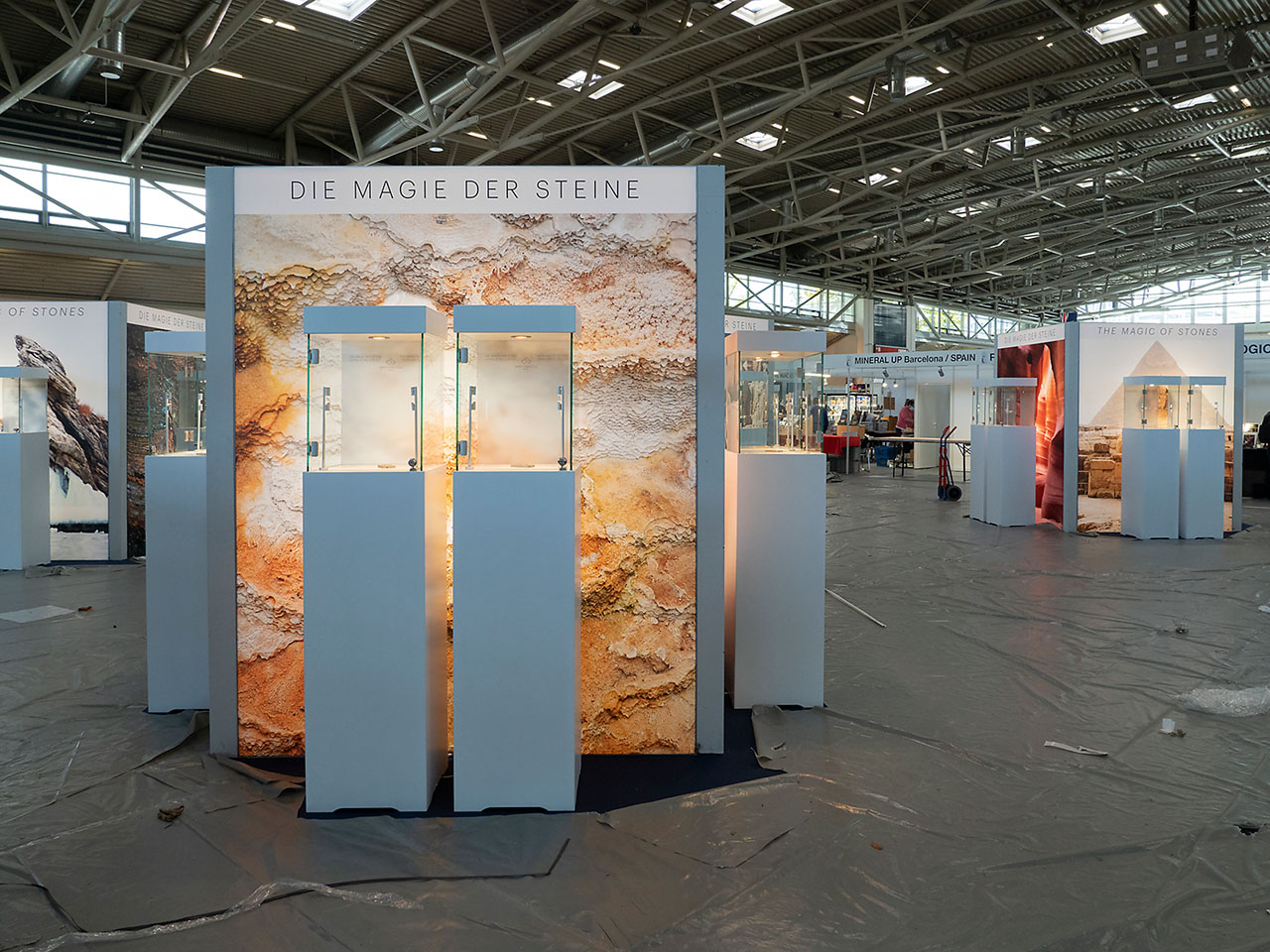
The COVID obviously affected also the dealers. There were plenty of stands empty in the A6 hall, many dealers and some publishers were present only during the public days. Most Chinese dealers were missing completely and the dealers from outside the EU were quite diluted too.
The classic premium dealers block in the A6 hall was reorganized but most were present. The A5 hall was visibly deserted, some dealers still unpacking stuff on Thursday afternoon and the Alpine block was also smaller then usually.
Surprisingly, there was quite a lot of new material. Some of the stuff was not so hot news as it was already available on other major shows or online. I do not closely follow all the news on mineral market, so I obviously miss some.

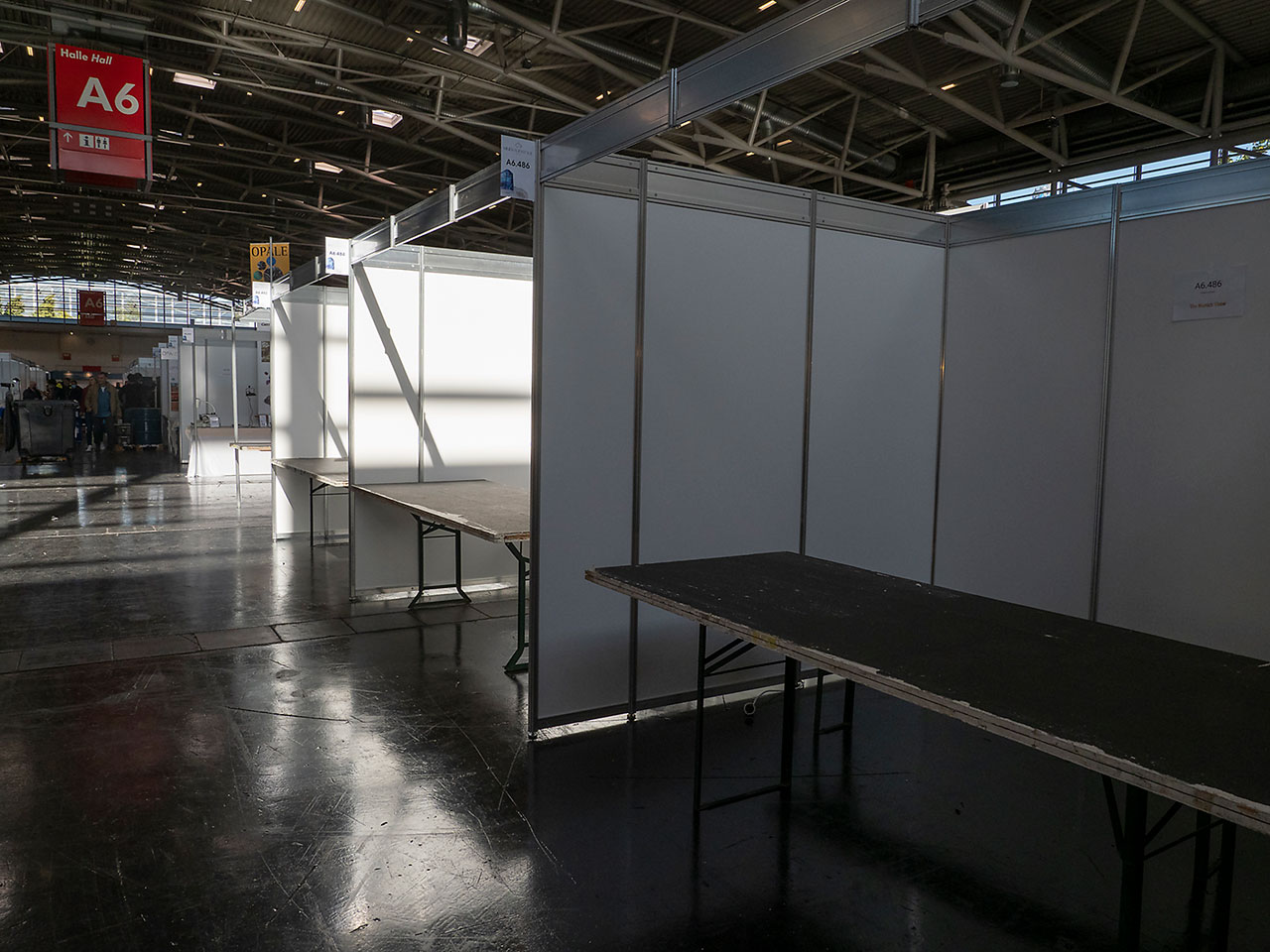
Alpine Cleft Minerals
As already mentioned, the Alpine block in the A5 hall was visibly smaller and without any Alpine exhibition. I noticed a 2020 find of bright green sphene titanite from Felbertal by Hoffer family. There was also a lot of classic stuff, but I did not notice something really extraordinary.
The interesting was smoky double gwindel from Fellistock and some hematite Eisenrosen from Zillertal and Fibbia by Anton Watzl, the huge pale gwindels on matrix from Chamonix by Alain Martaud, and of course lovely dark Swiss smokies and huge fluorites by Jürgen Margraf. There were also quite cheap and nice perikline feldspars from Austria.
The Alpine clefts are not limited to the Alps of course. Very lovely were numerous specimens of axinite from Puiva and way less common titanites with adularia from the same locality. These specimens were brought by KARP and were found about 20 years ago.
There were also several dealers offering large and high quality sagenite rutiles on matrix from Ibiajara, Bahia, Brazil. Unlike the classic oriented growths of hematite and rutile, these are only golden rutile needles on matrix.
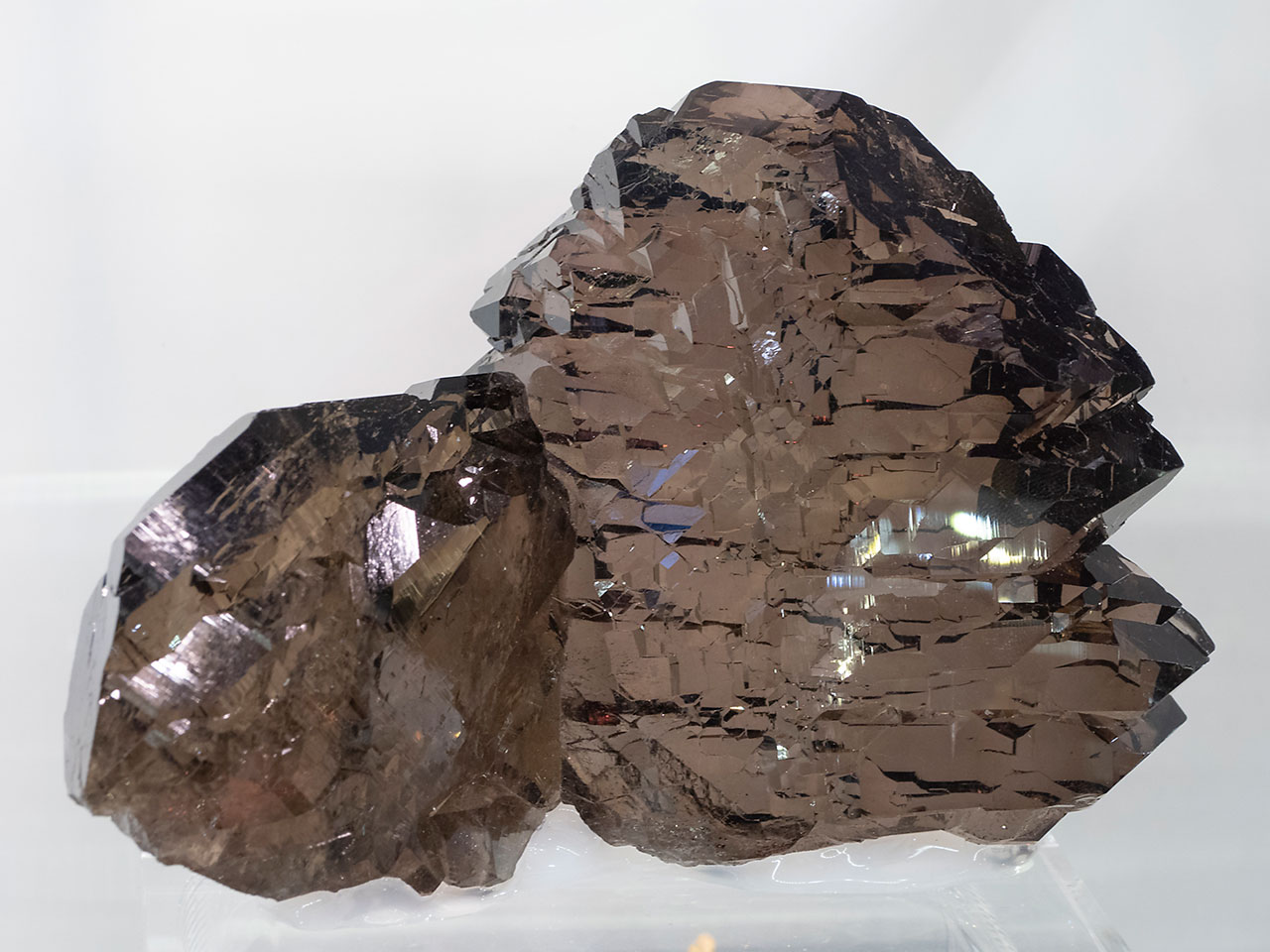
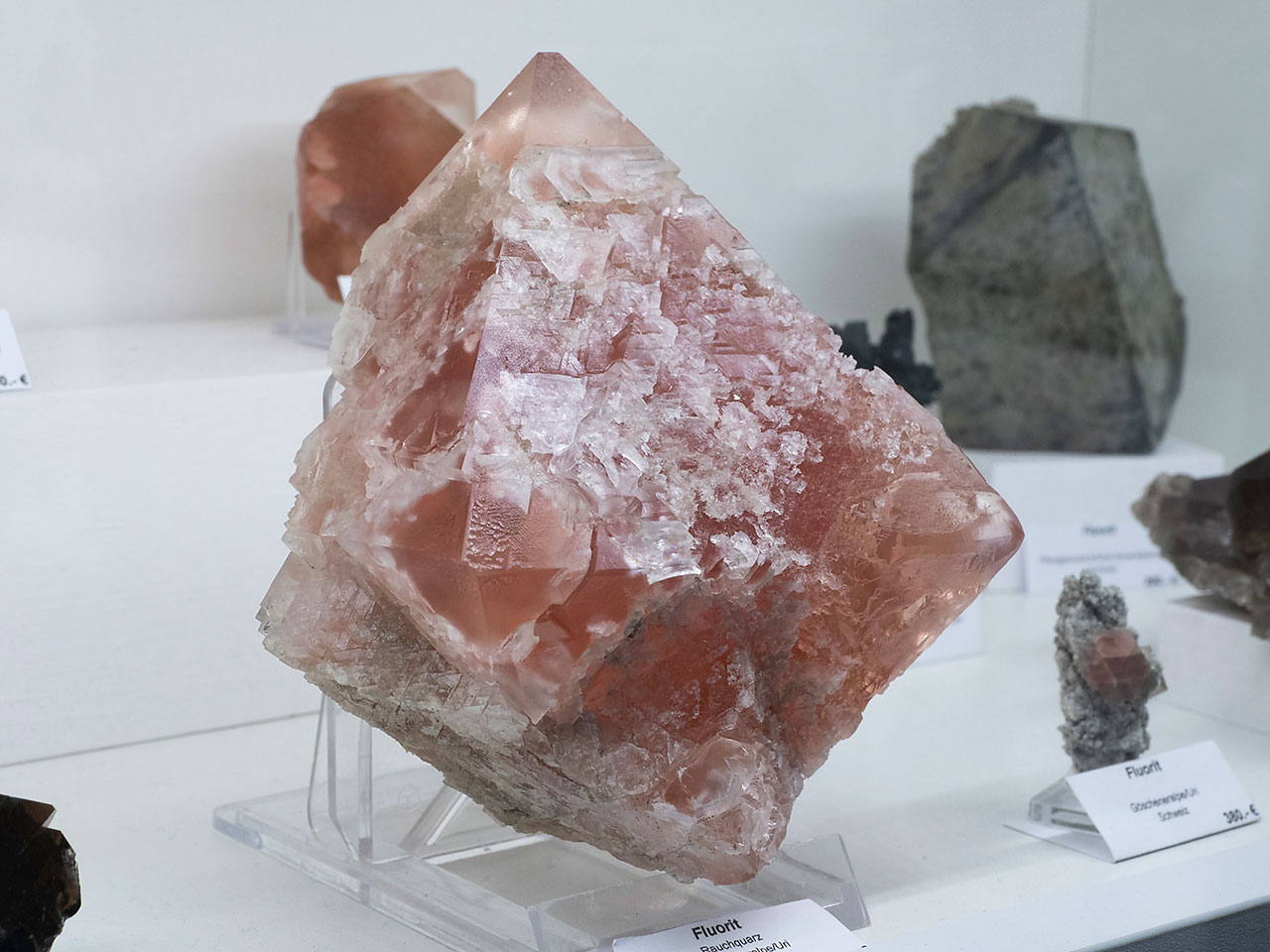
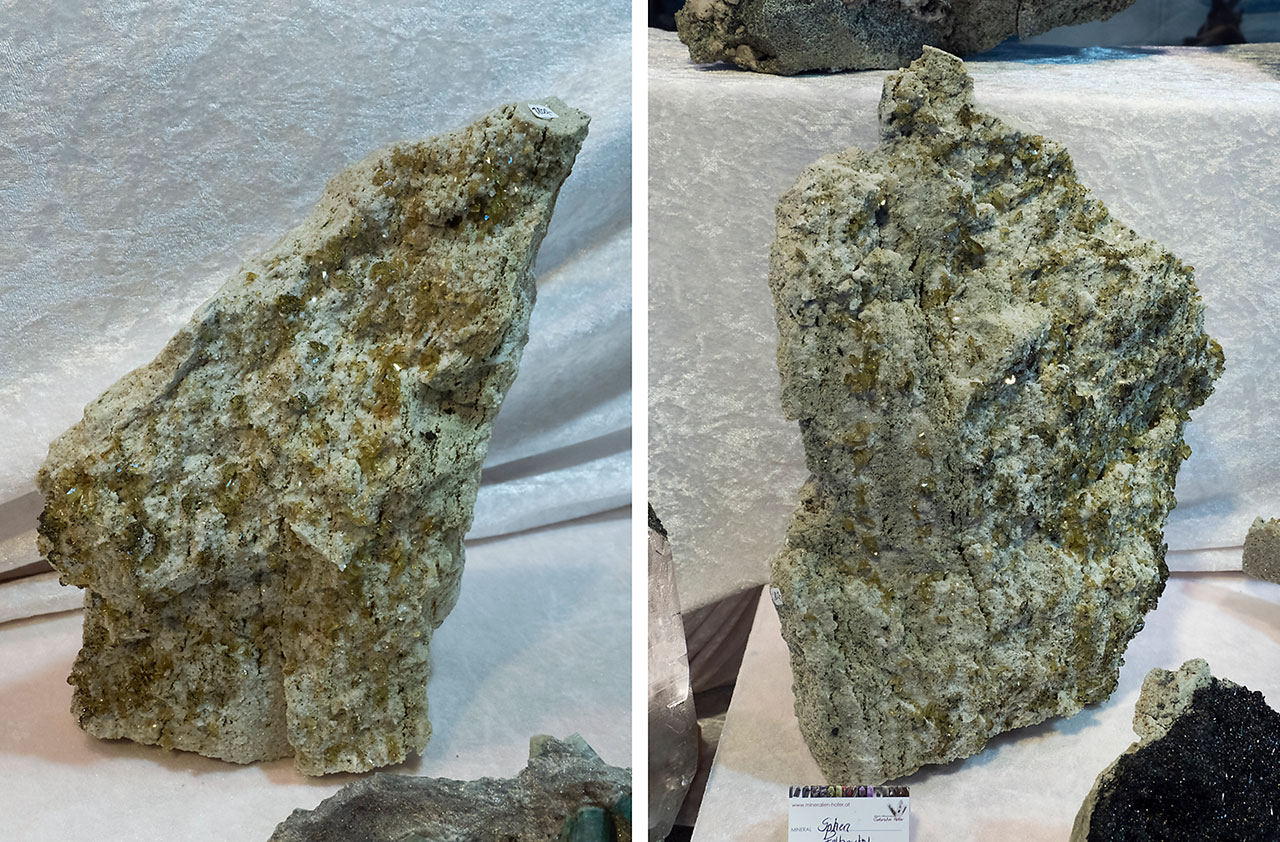
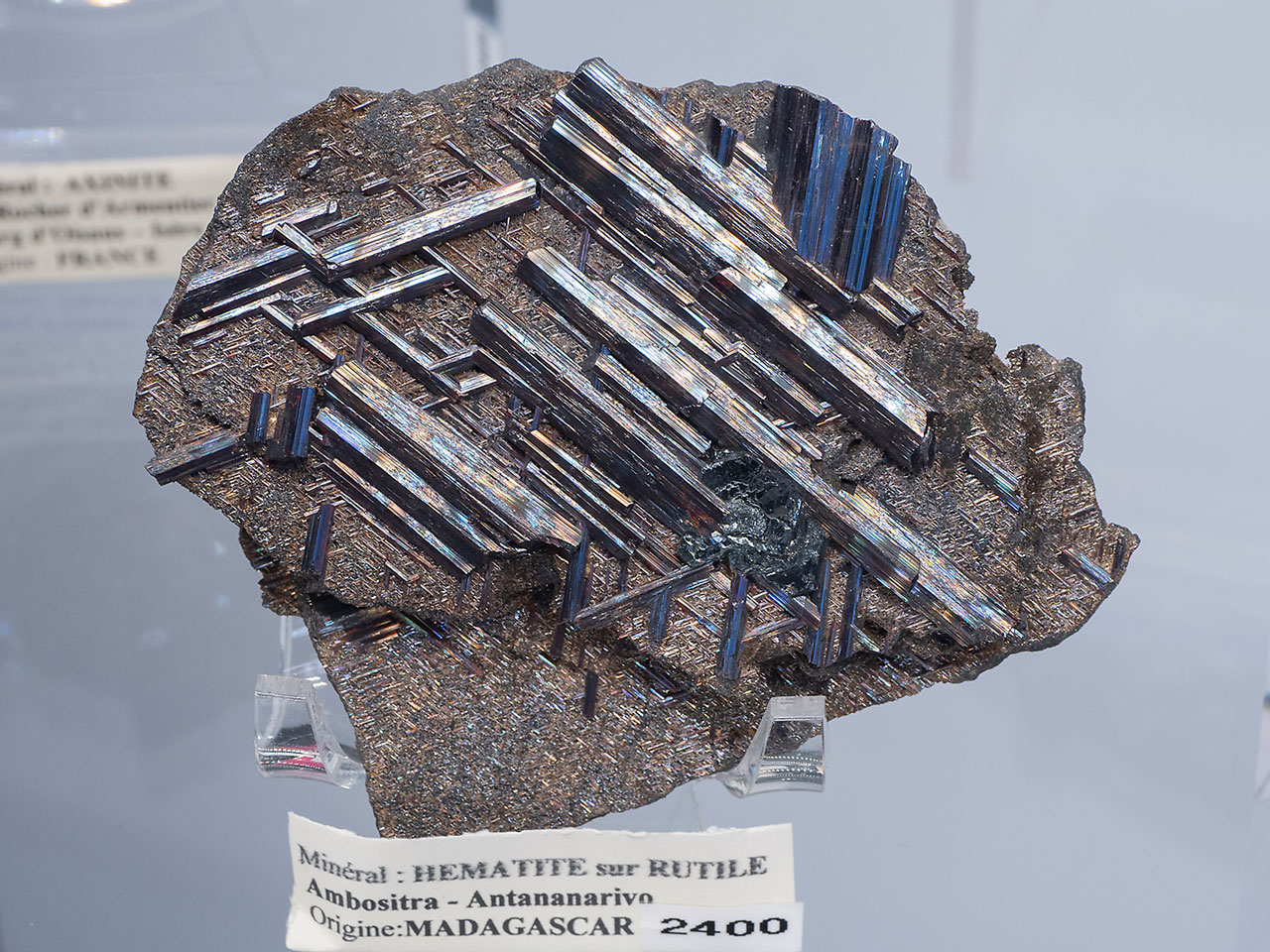
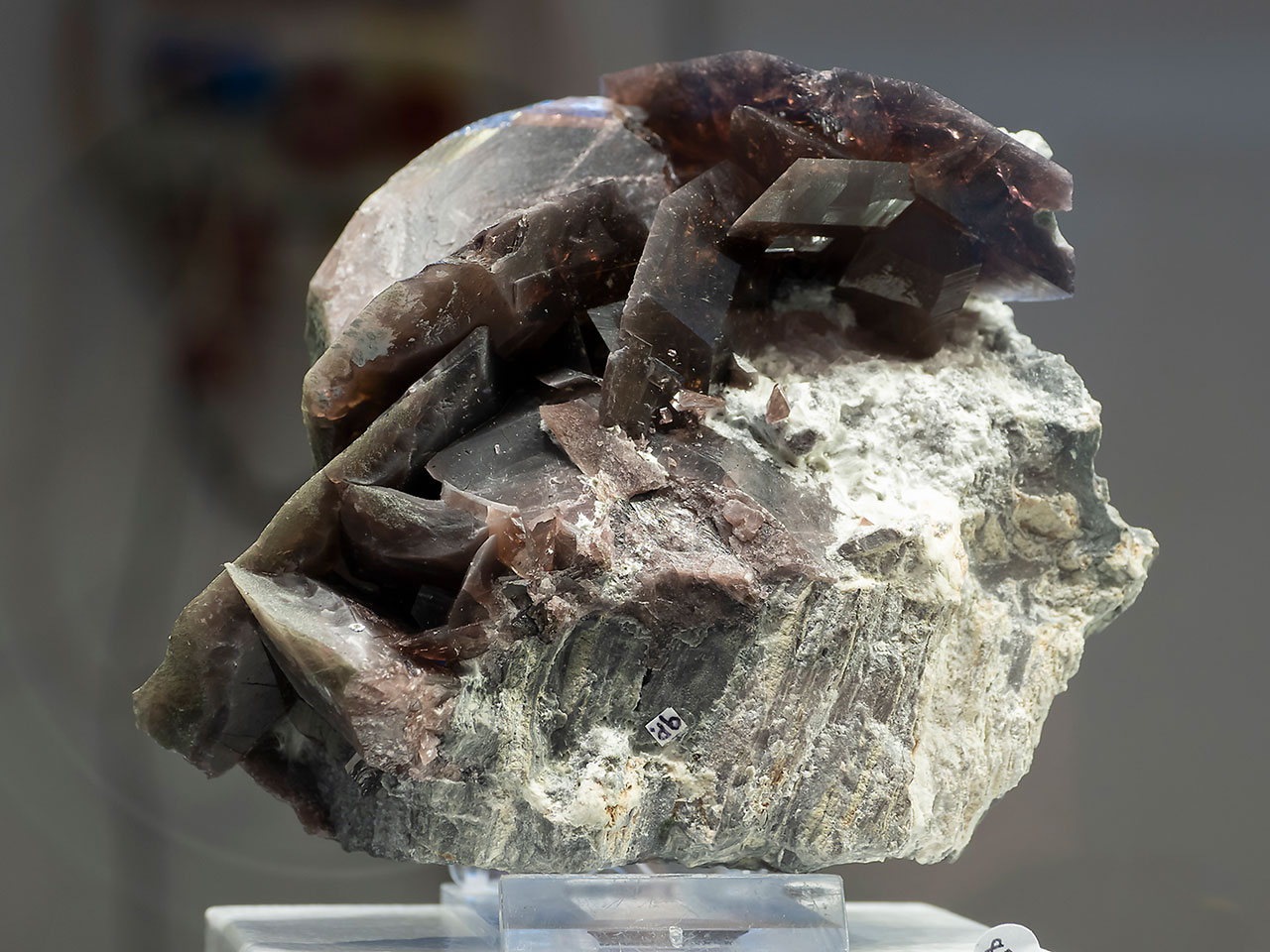

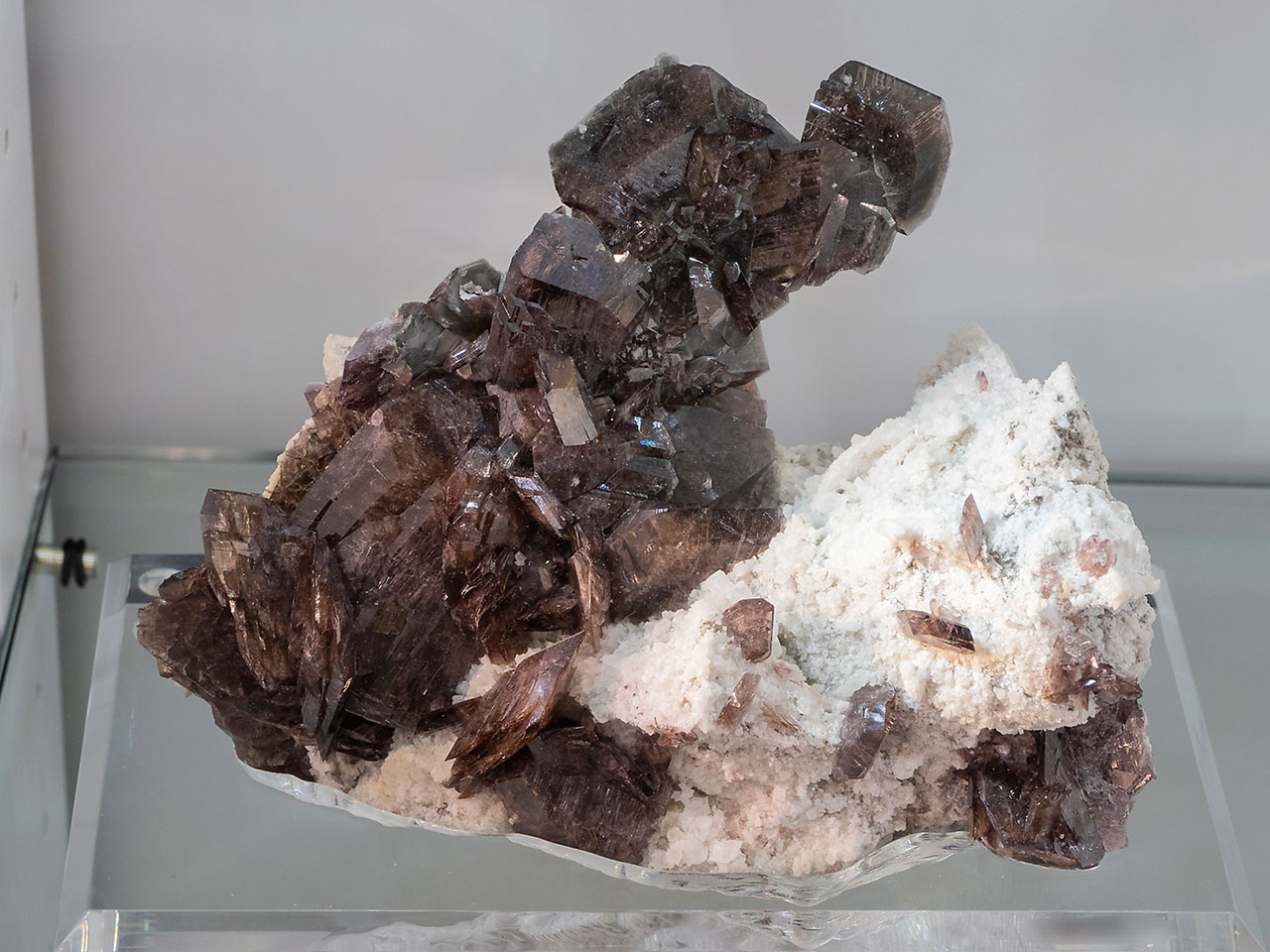
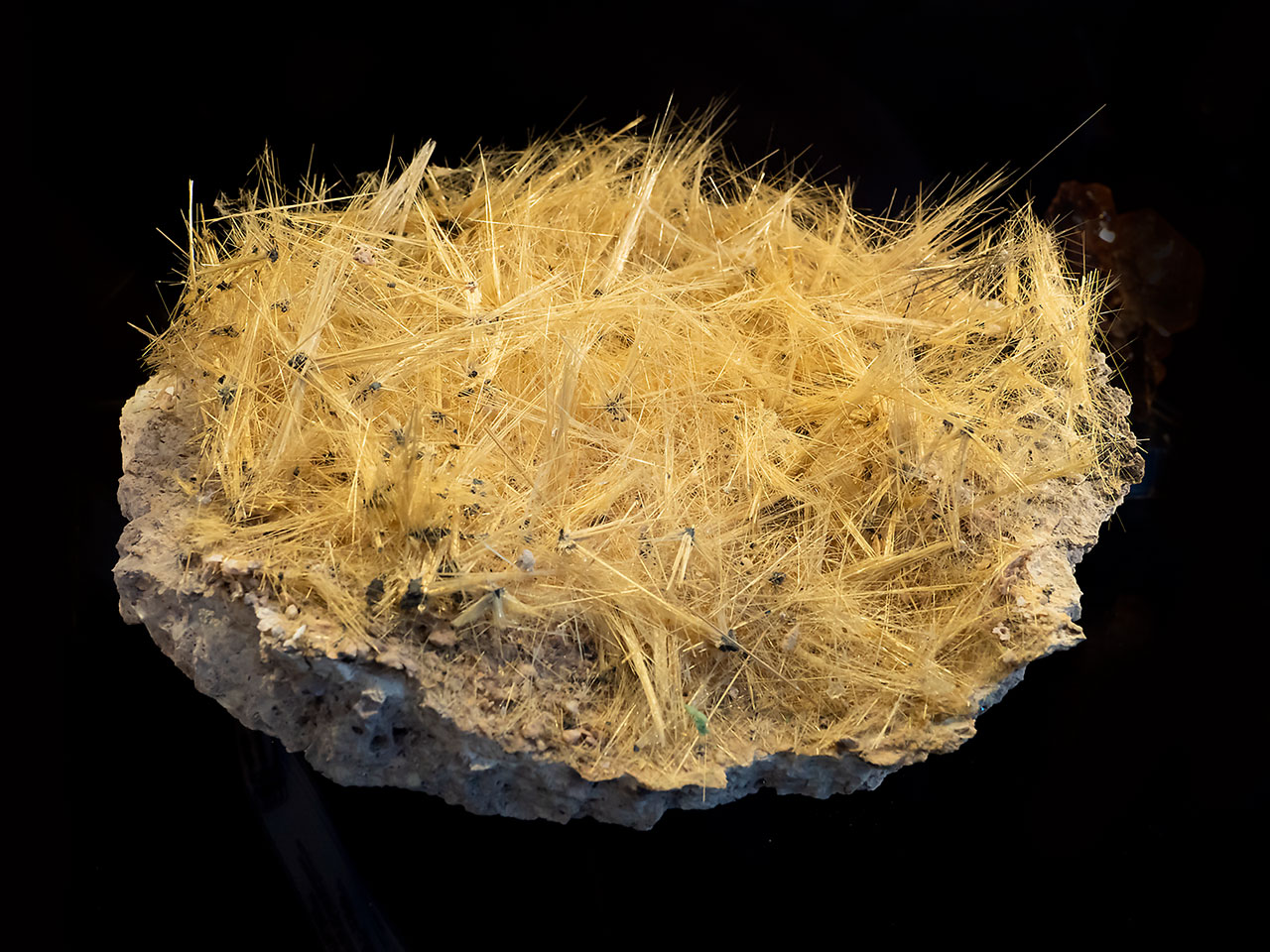
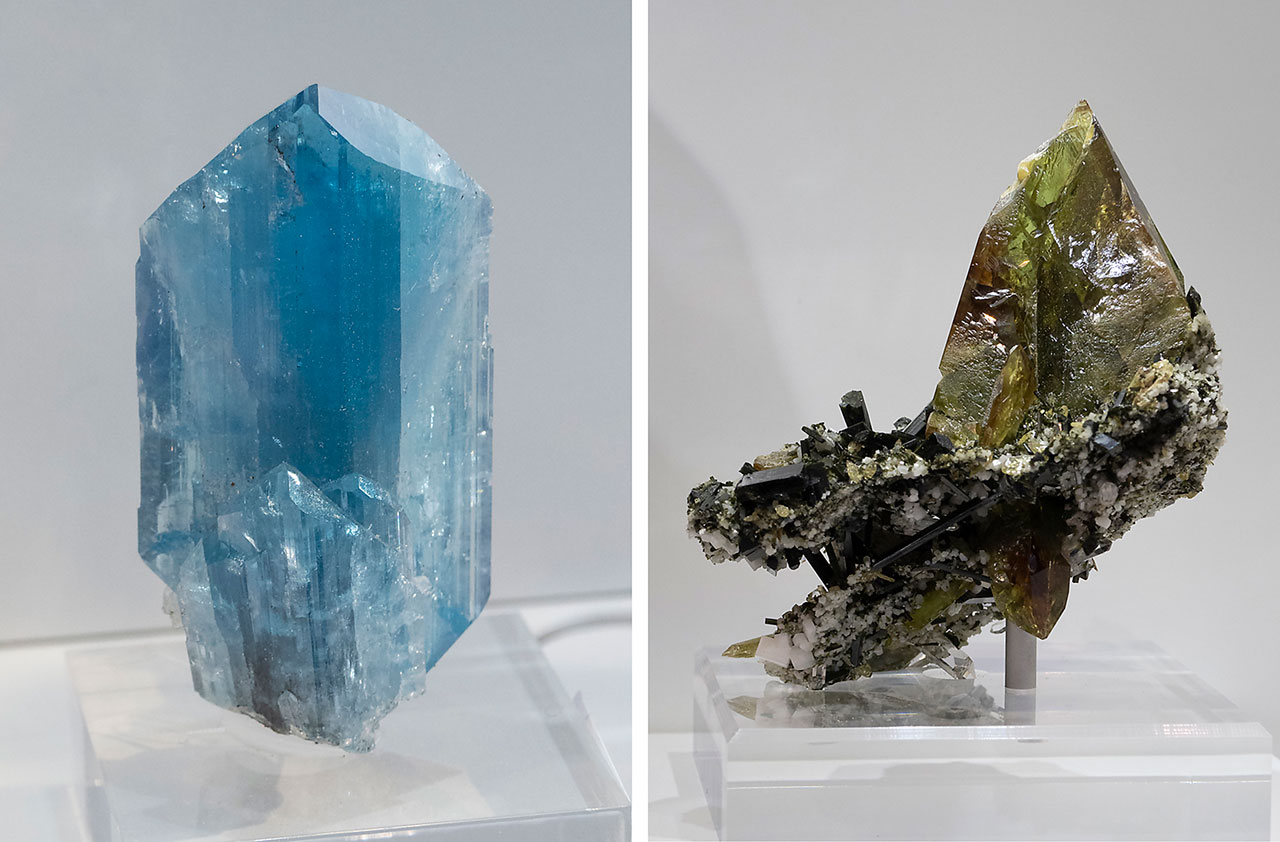
Pegmatite Minerals
The pegmatite section contained the evergreen classics: Superb tourmalines from Golconda and Cruzeiro, Brazil, by Marco Tironi. Killer aquas from Shigar, Pakistan, great tourmalines from Paprok, Afghanistan, and huge kunzites from Mawi, Afghanistan – all these offered by Mustafa Ghulam and other dealers.
Numerous dealers were offering specimens from Malkhan, Russia, including some less common matrix specimens, and one impressivelly huge rubellite by KARP.
There was also very interesting altered and etched lithium tourmaline with albite from Barra de Salinas, Brazil, offered by Anton Watzl. Rudi Watzl still has some huge etched topaz specimens from Espírito Santo, Brazil. I noticed also a huge quartz almost completely covered by brazilianite from Linopolis, Brazil.
More extraordinary was the terminated rubellite with lepidolite flakes from Malysha pegmatite, East Pamir, Tajikistan – I hope we will see more specimens from this area soon!
The other strange pegmatite material were autunites with minor phurcalite from Assunçao Mine, Aldeia Nova, Sátao, Portugal, offered by Amazing Minerals. These are found within pegmatite, but are created by alteration processes of primary assemblage.
There were also some rare minerals available: Impressive huge and pretty well defined pollucite crystal with gemy lithium tourmalines from Paprok, Afghanistan. But there were more pollucites available, as well as new 2020 finds of hambergite and etched pollucite from Pakistan.
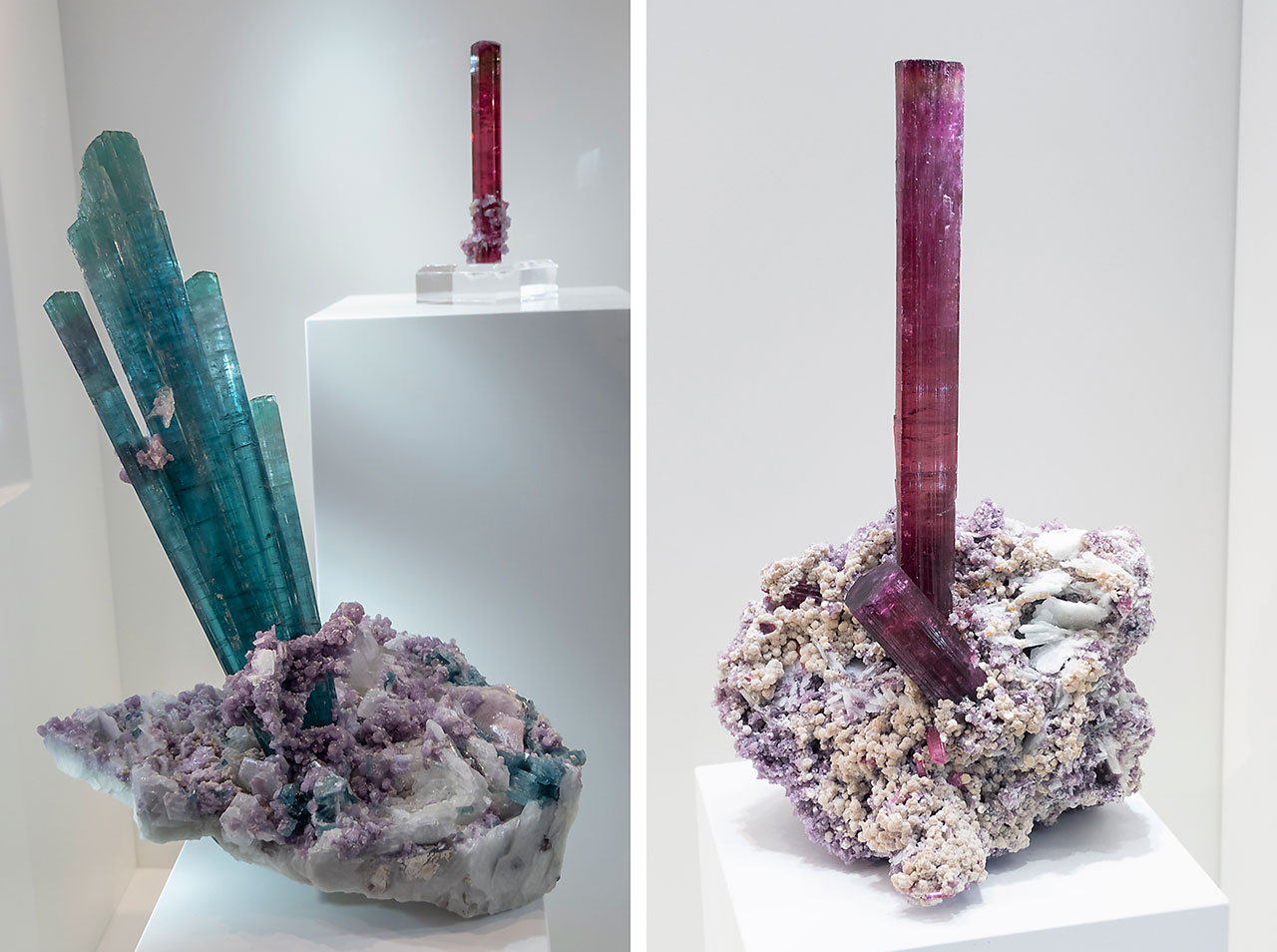
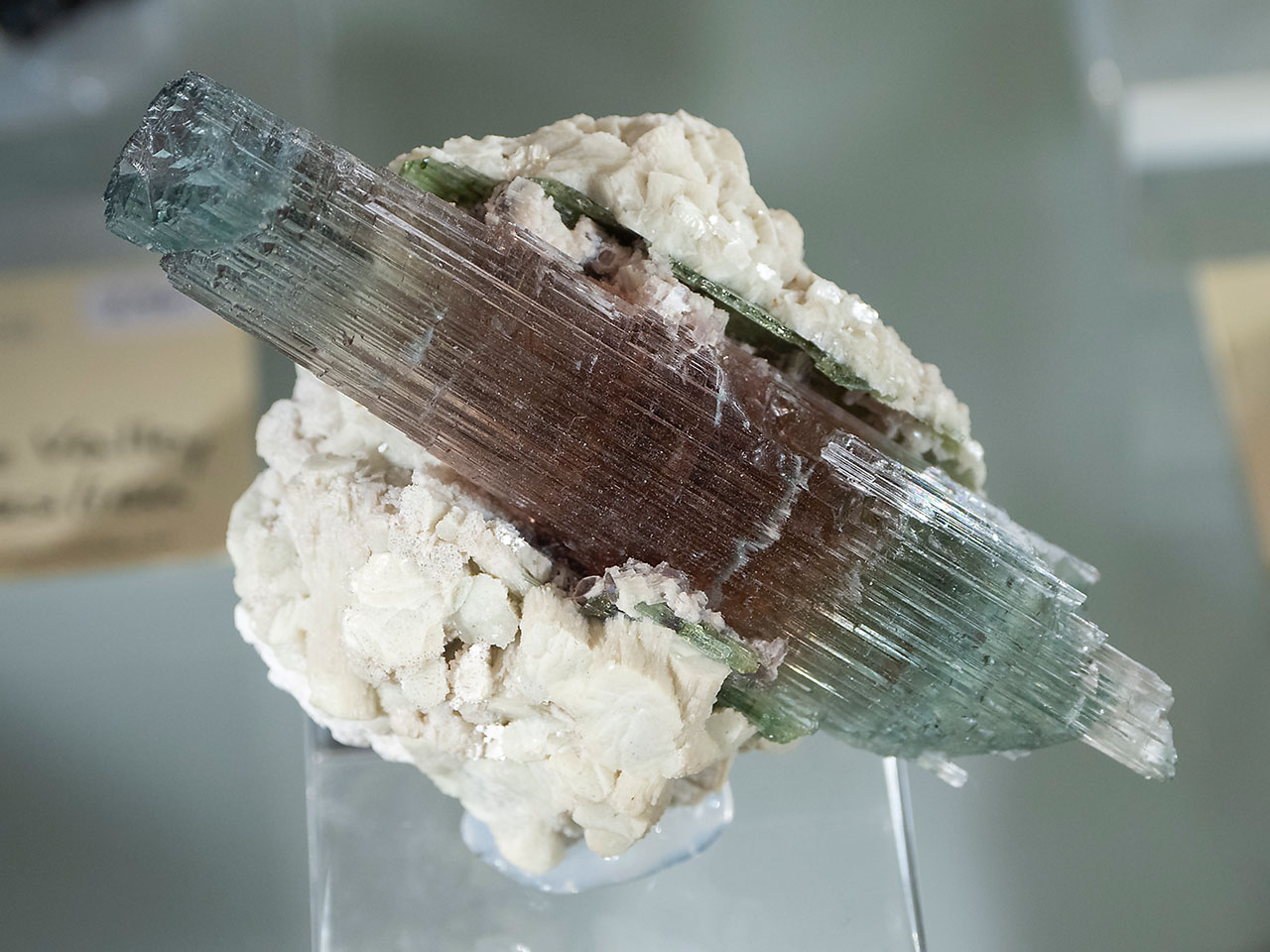
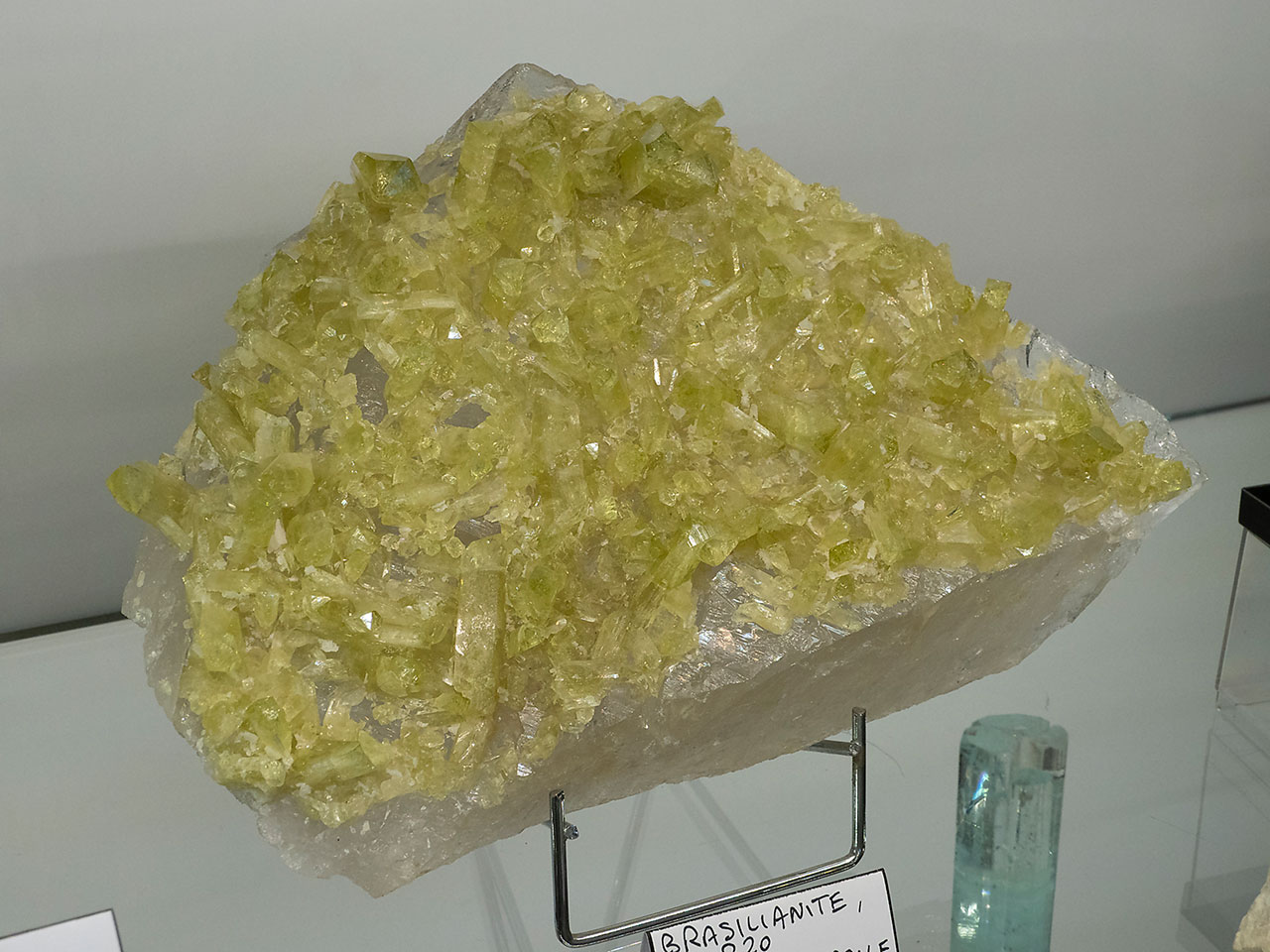
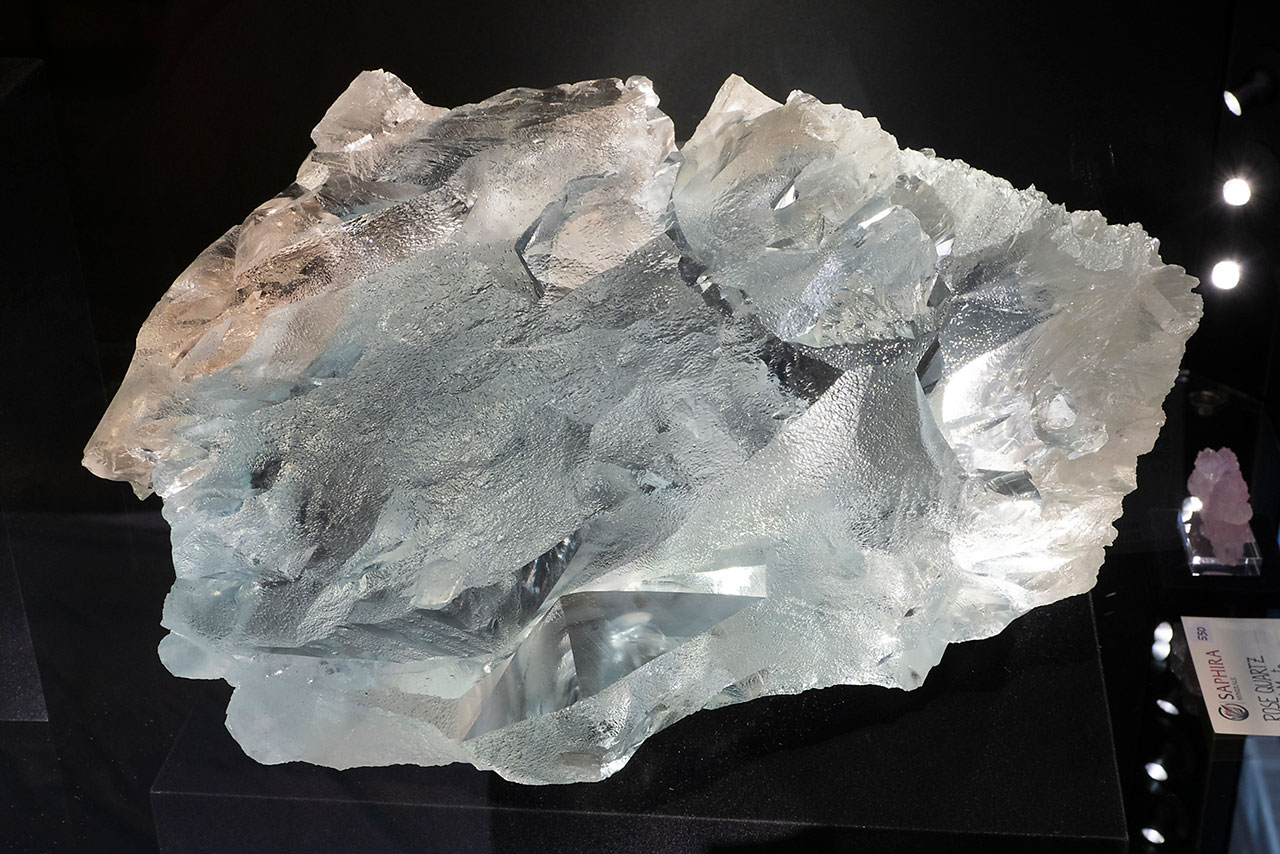
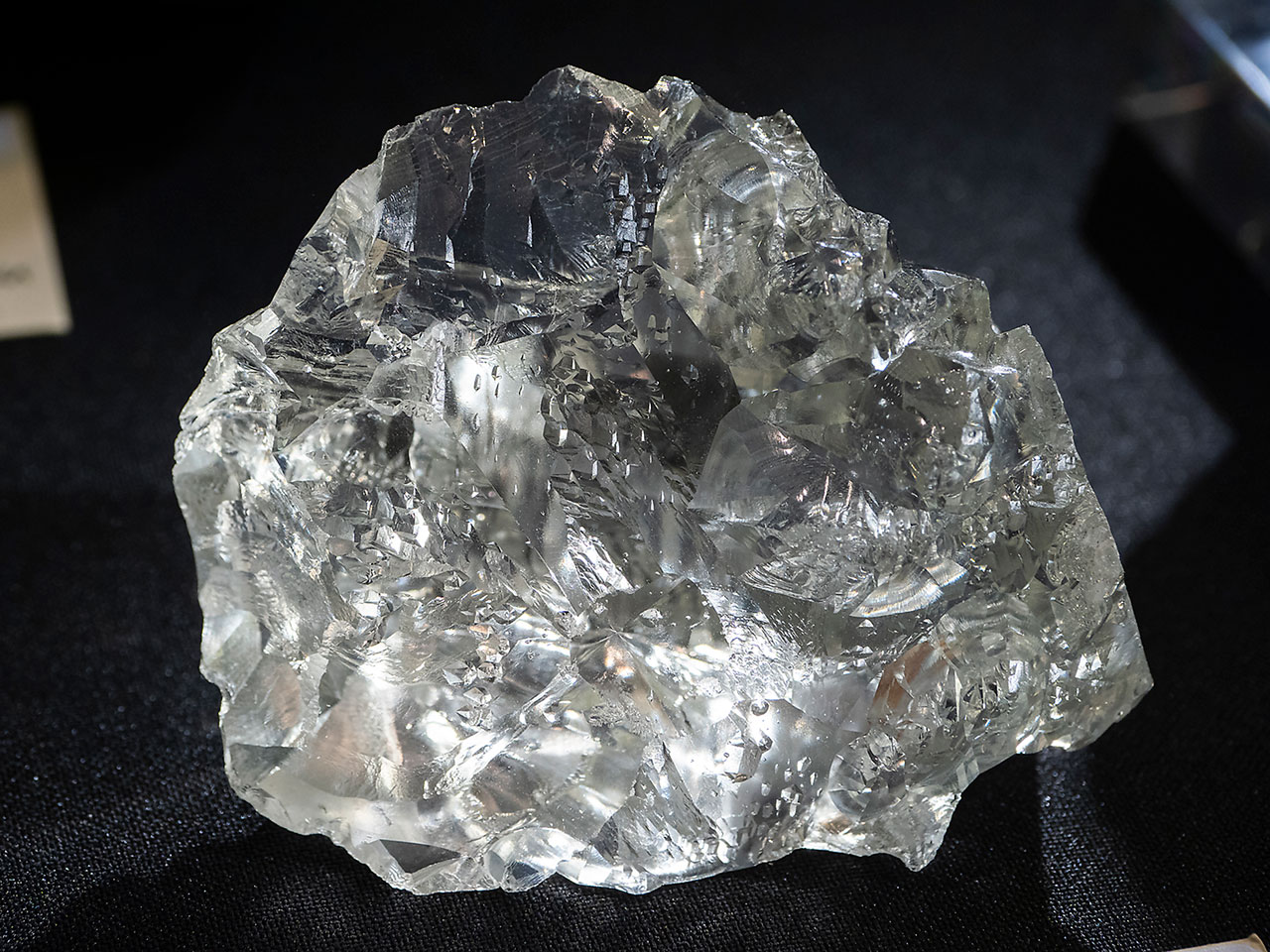
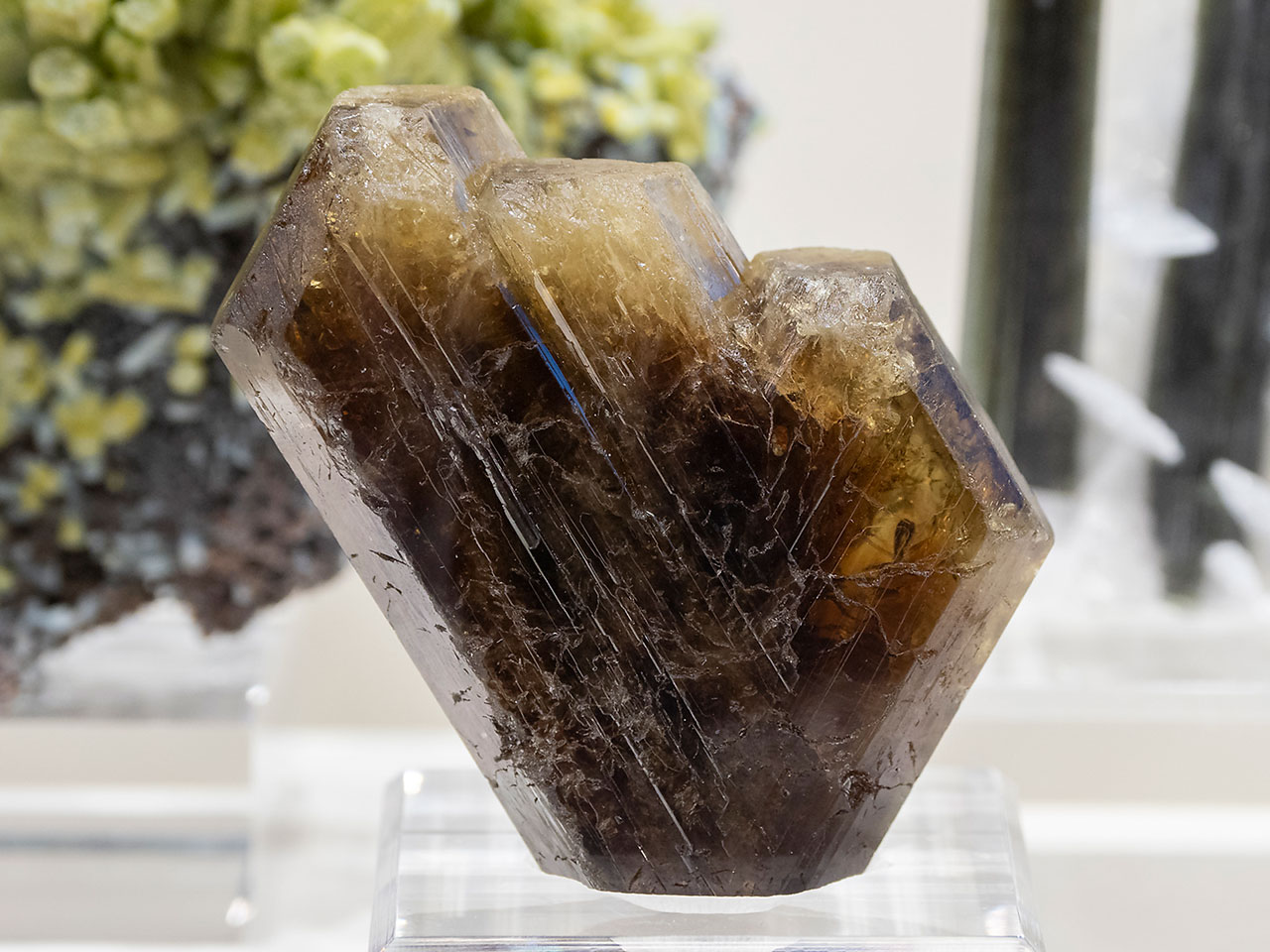
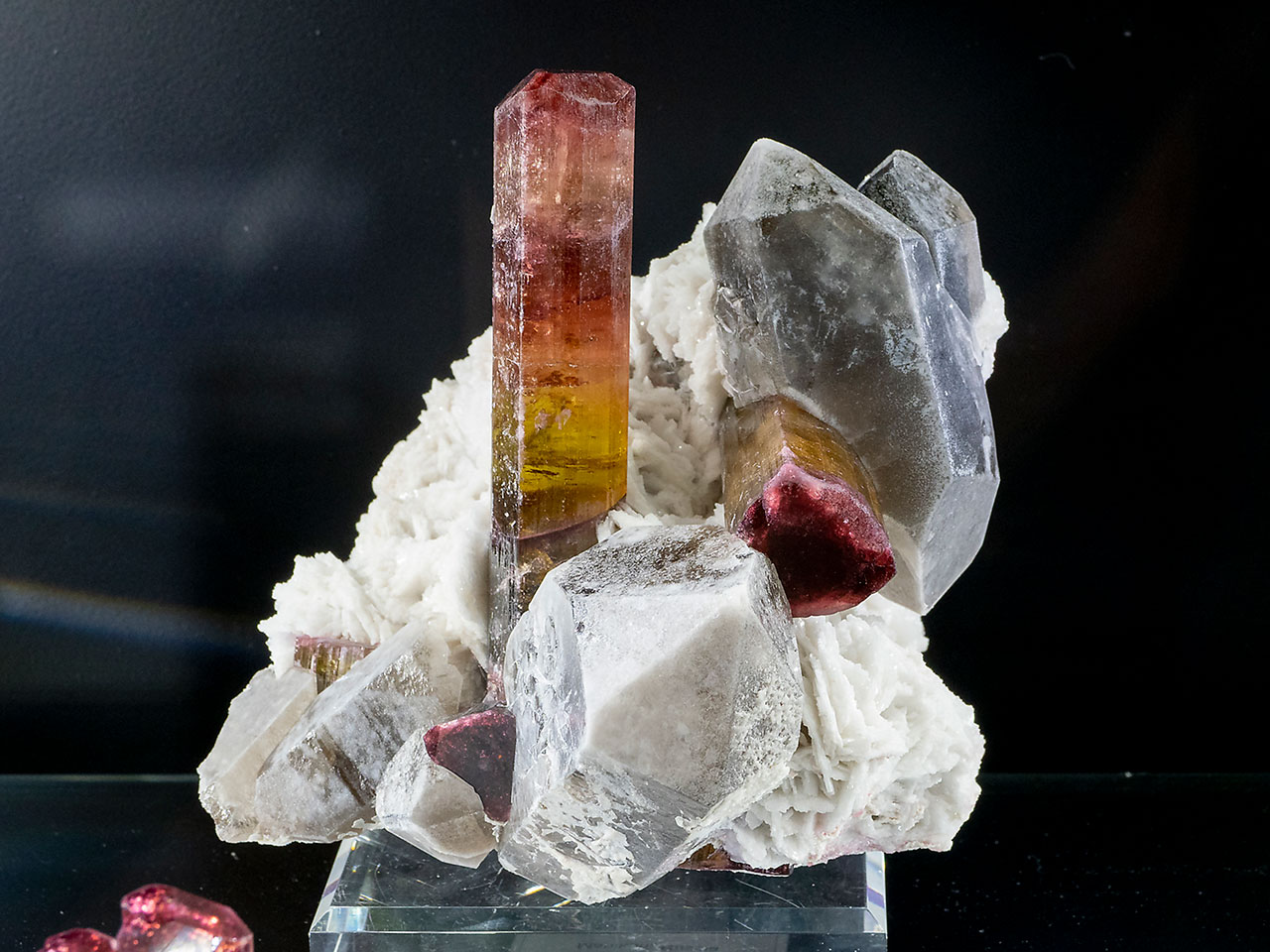
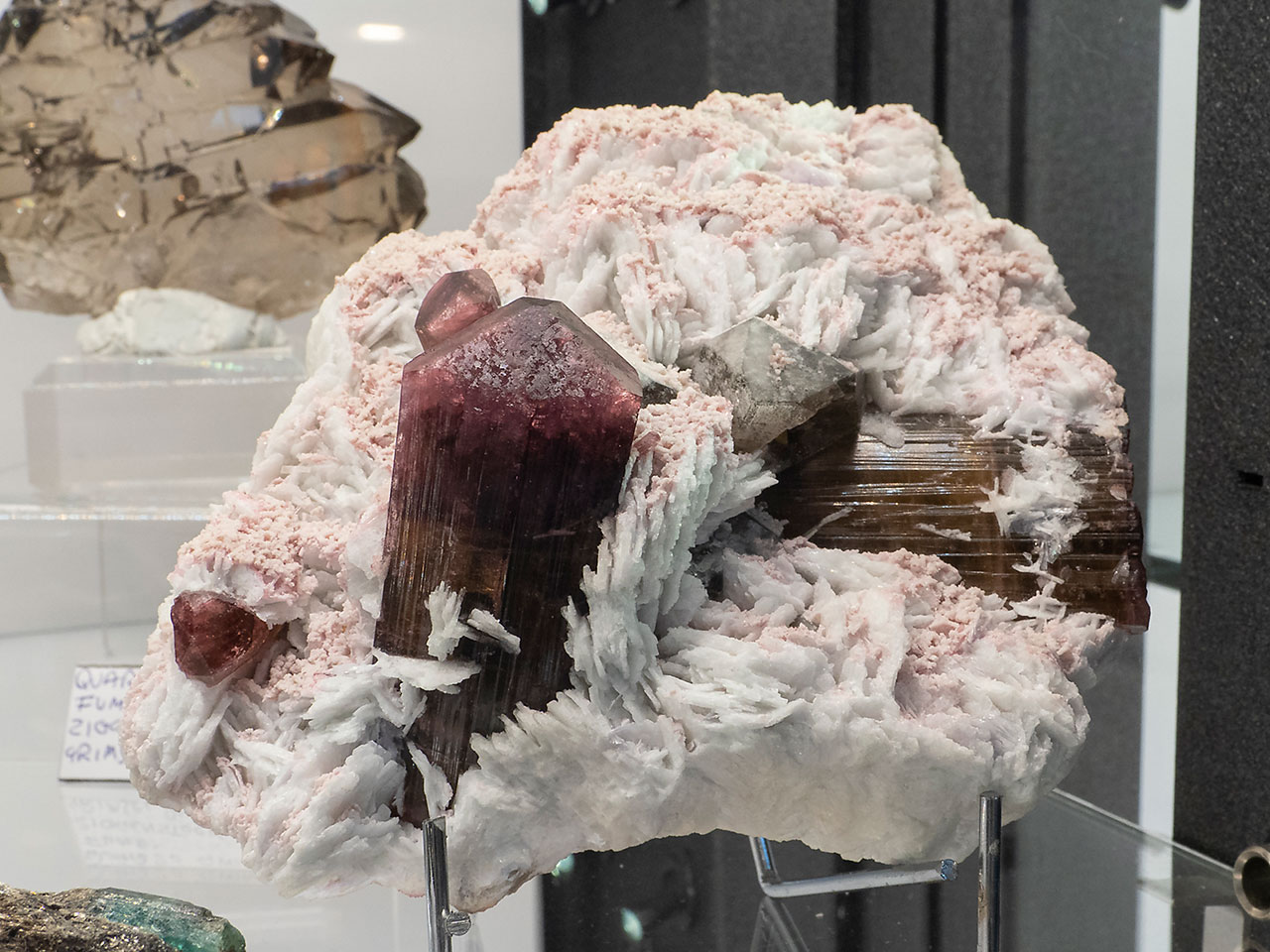
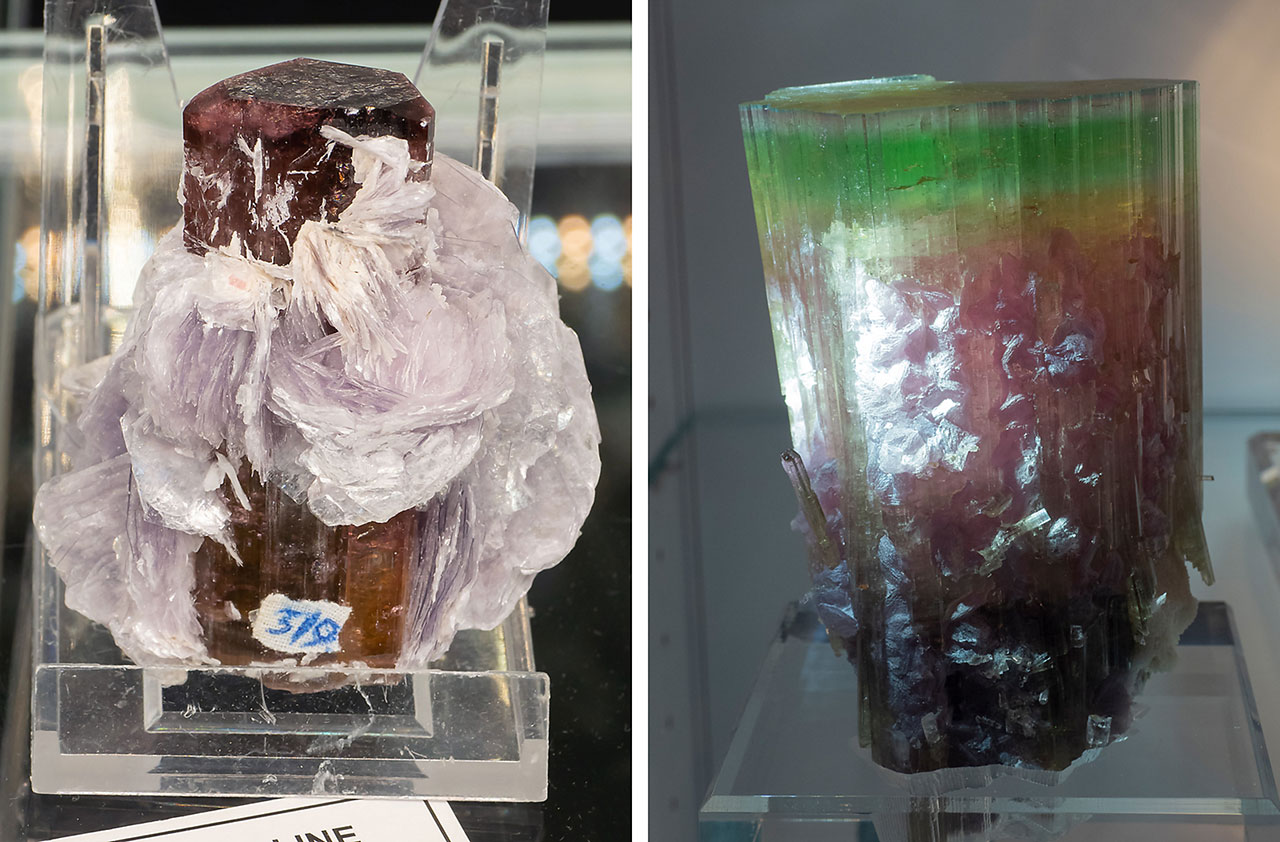
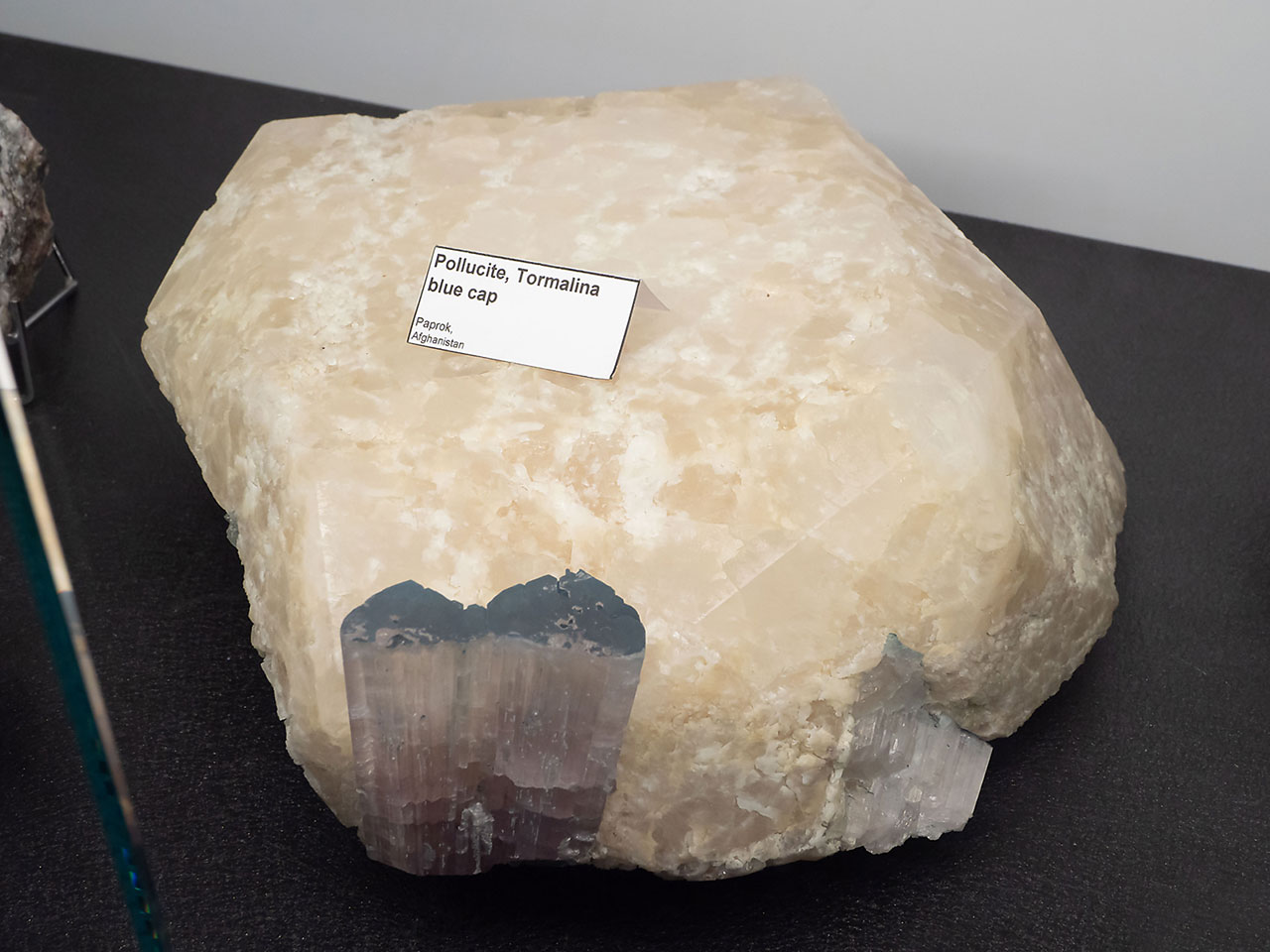
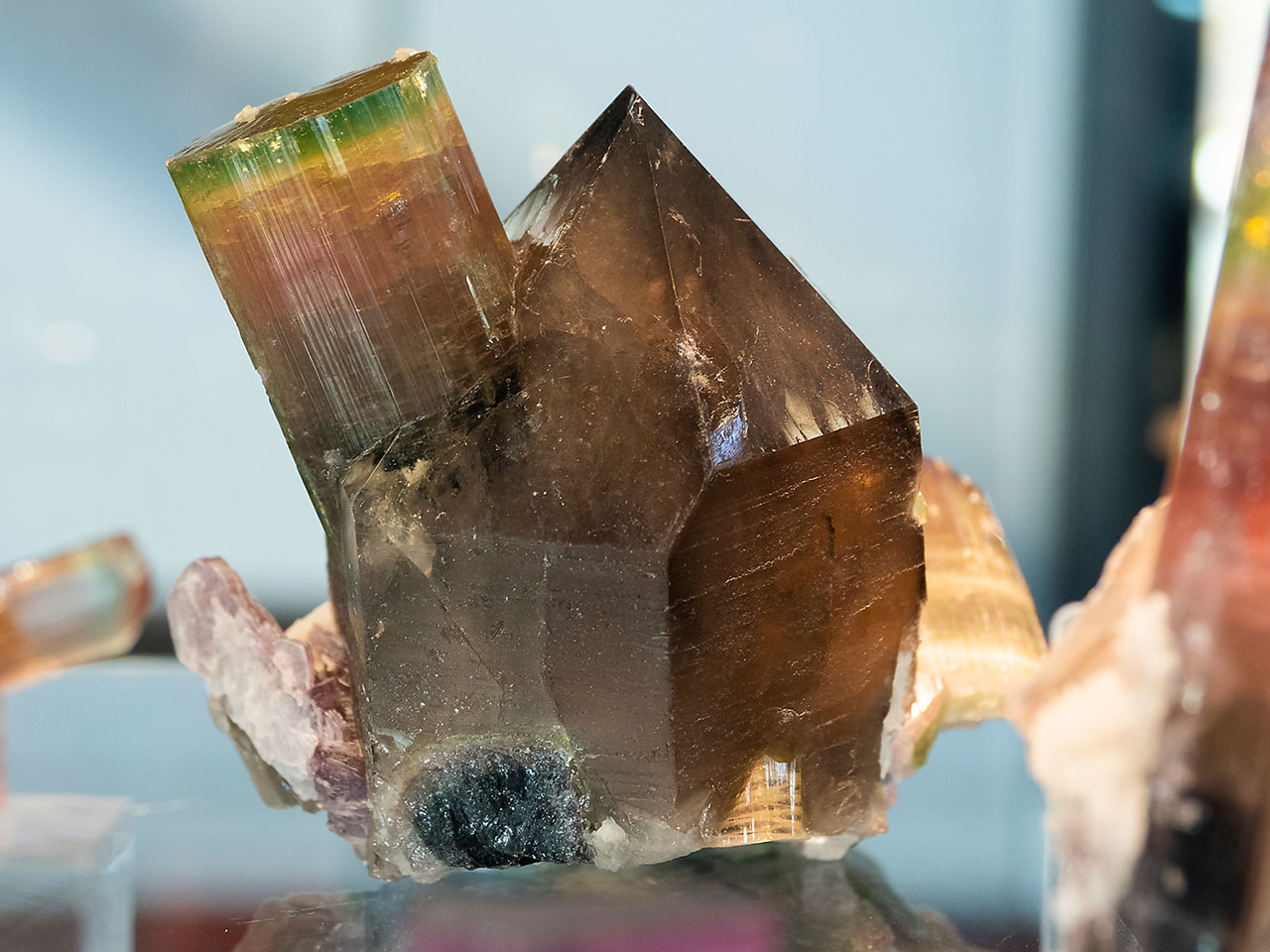
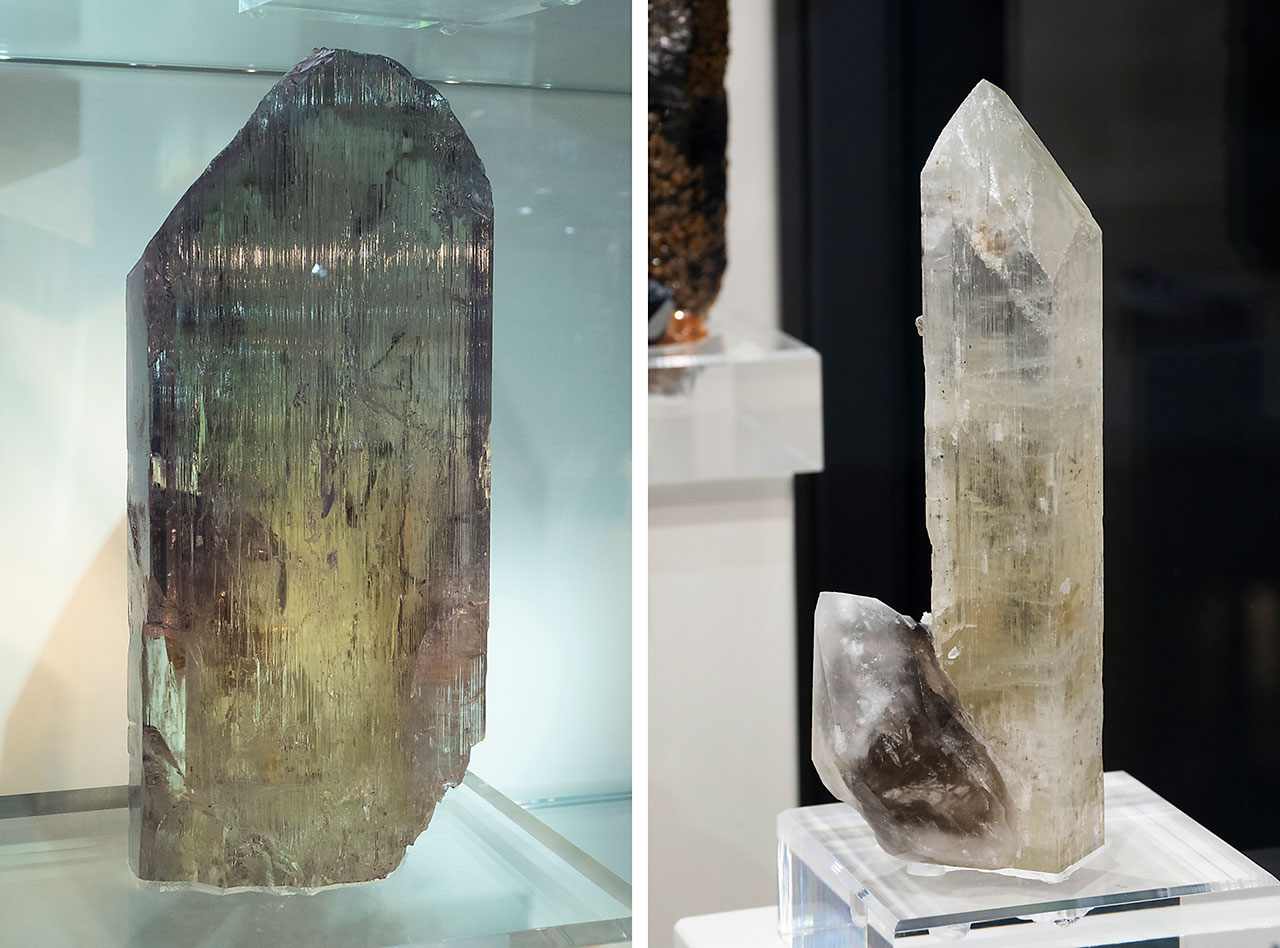
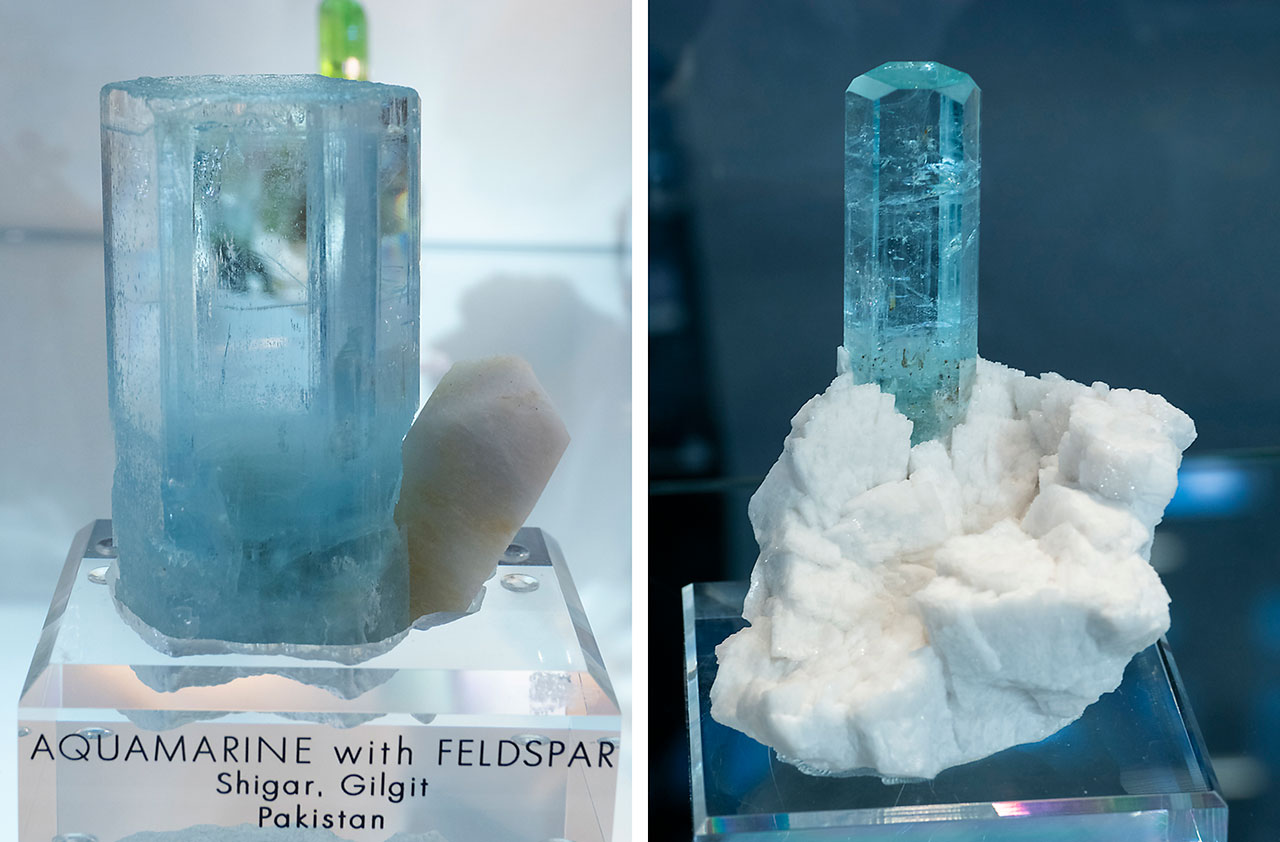
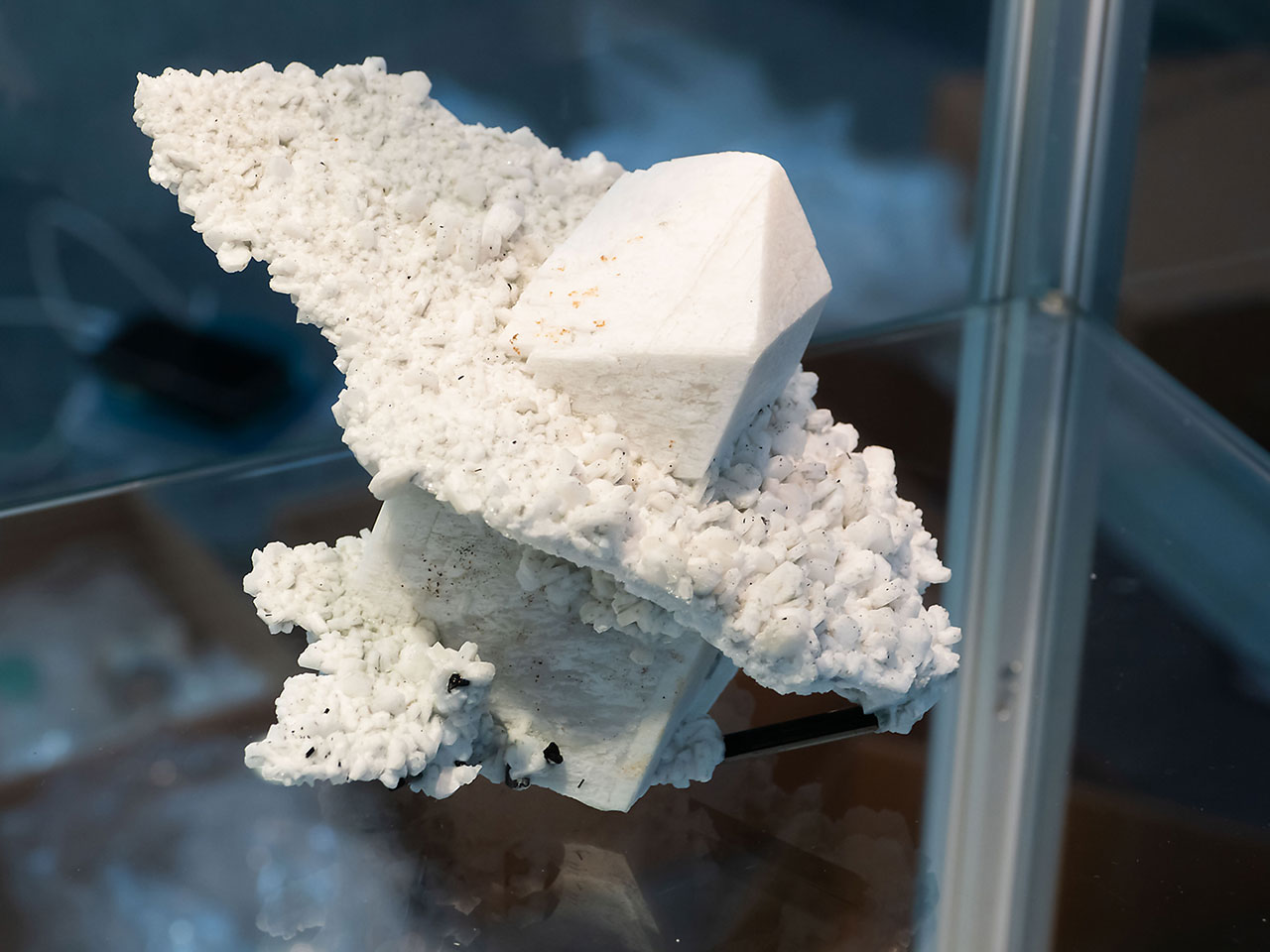
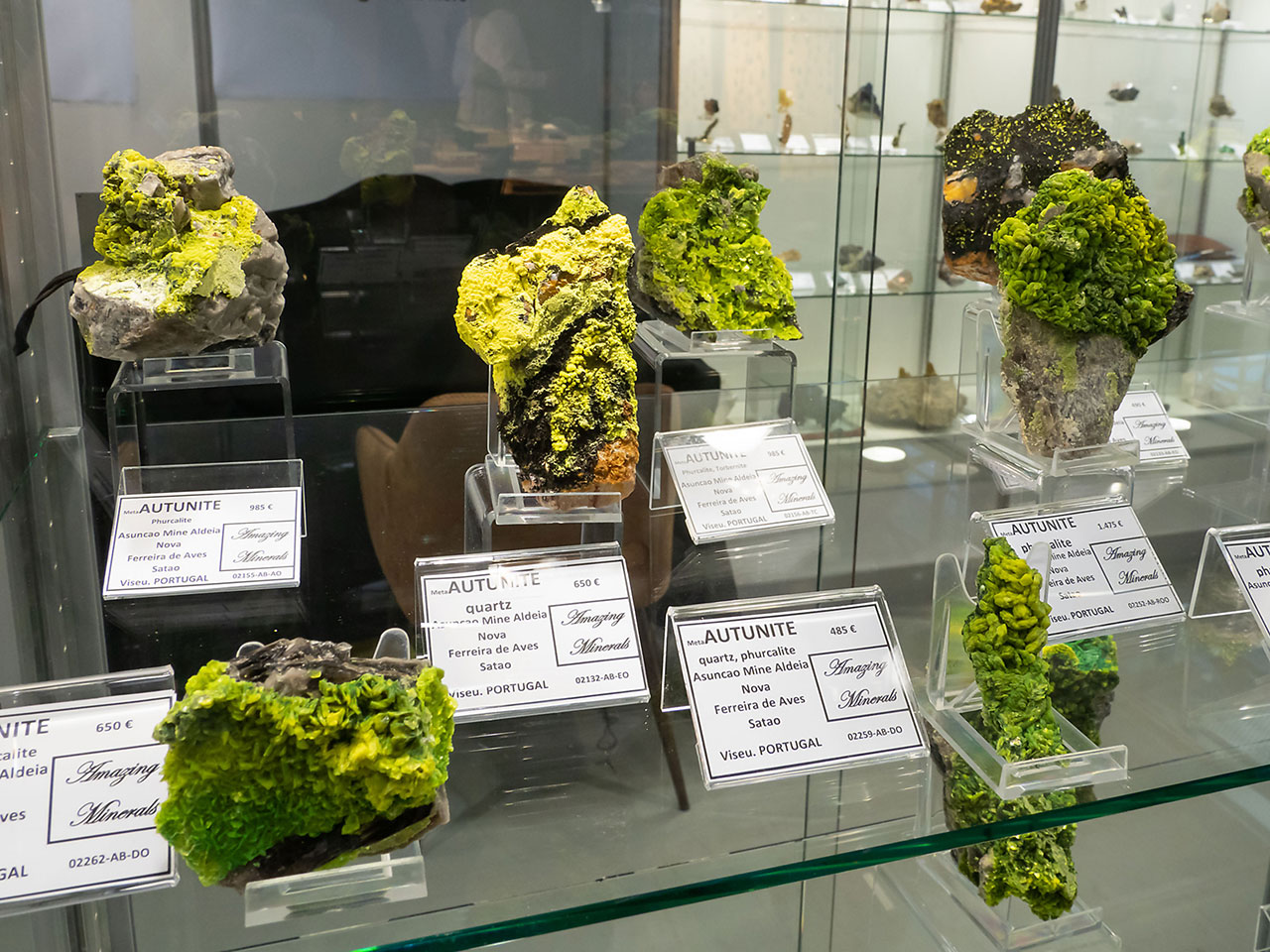
Secondary Minerals
The classic colorful, popular, and very broad field is secondary minerals. Probably the most photographed and shared were the huge vivianites and less common ludlamites from Cabeça do Cachorro claim, São Gabriel da Cachoeira, Amazonia, Brazil. The largest vivianite was surprisingly also among the super aesthetic pieces, and was offered together with impresisve ludlamite specimen by Alain Martaud.
Numerous dealers – ranging from Moroccan locals in A5 hall to premium delaers in A6 hall – offered new dark and huge vanadinite crystals. These were available at quite nice prices from small clusters up to a huge muzeum sized specimens. The single crystals exceeded 3 cm! There were also more dealers with nice and big azurite crystals from Milpilas, Sonora, Mexico. And I noticed also one less common azurite cluster from Sepon Mine in Laos.
The bright orange wulfenite from Ahmad Abad Mine, Bafq Co., Yazd Province in Iran, coul’d not be overlooked. These rich clusters of world-class wulfenite were offered by Cristalli. And there were of course numerous pyromorphites from both China and classic European sites offered.

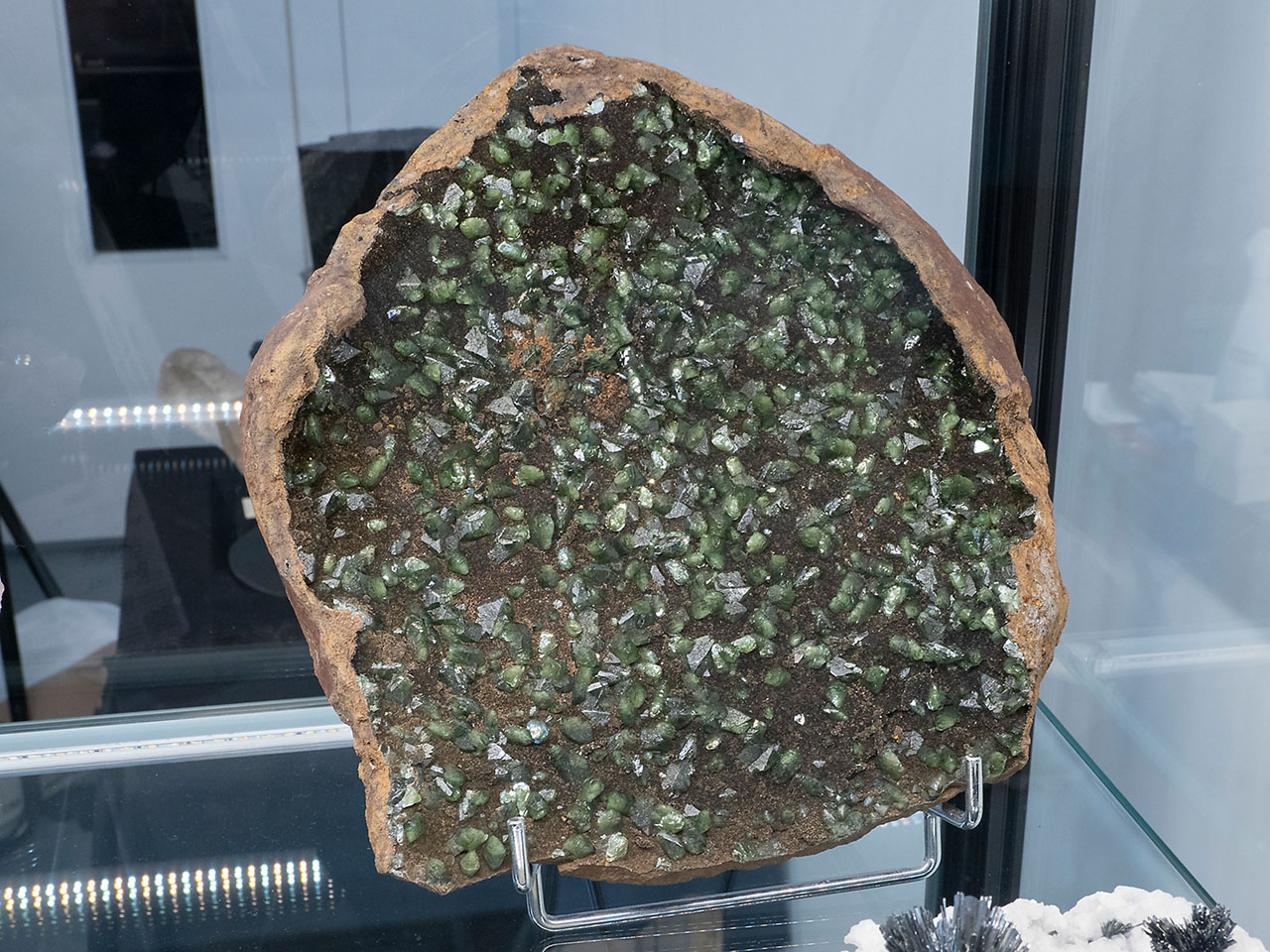
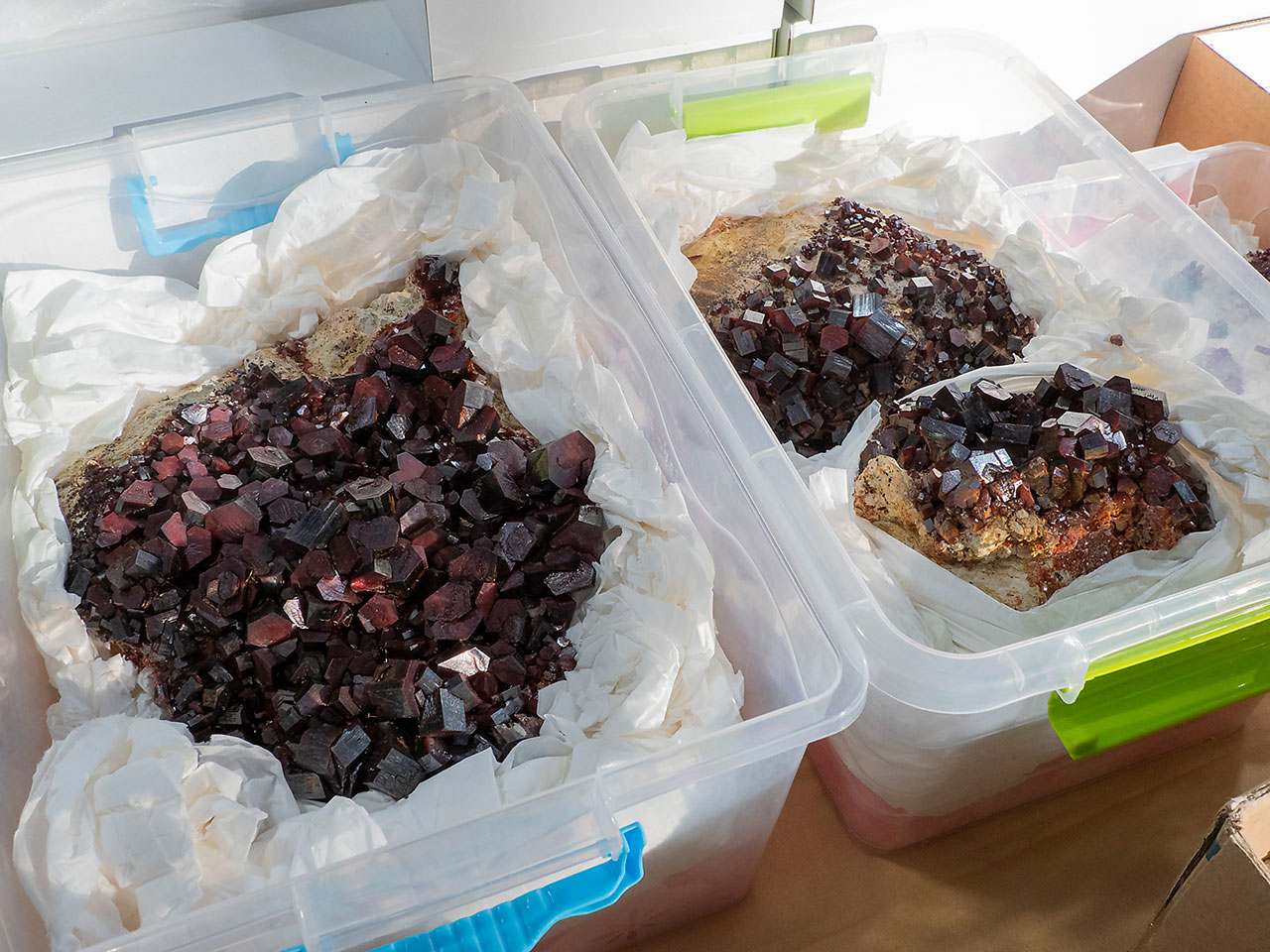

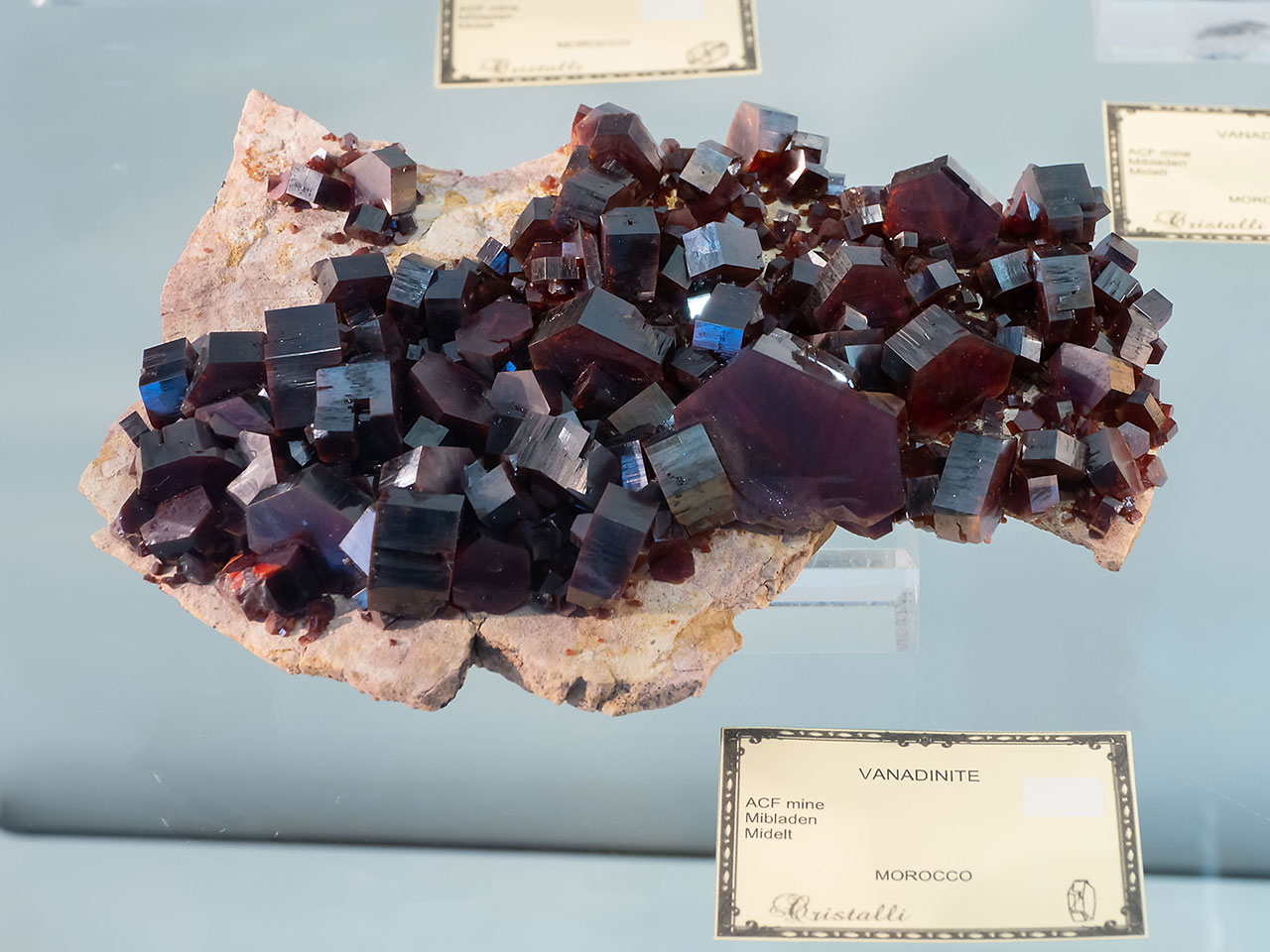
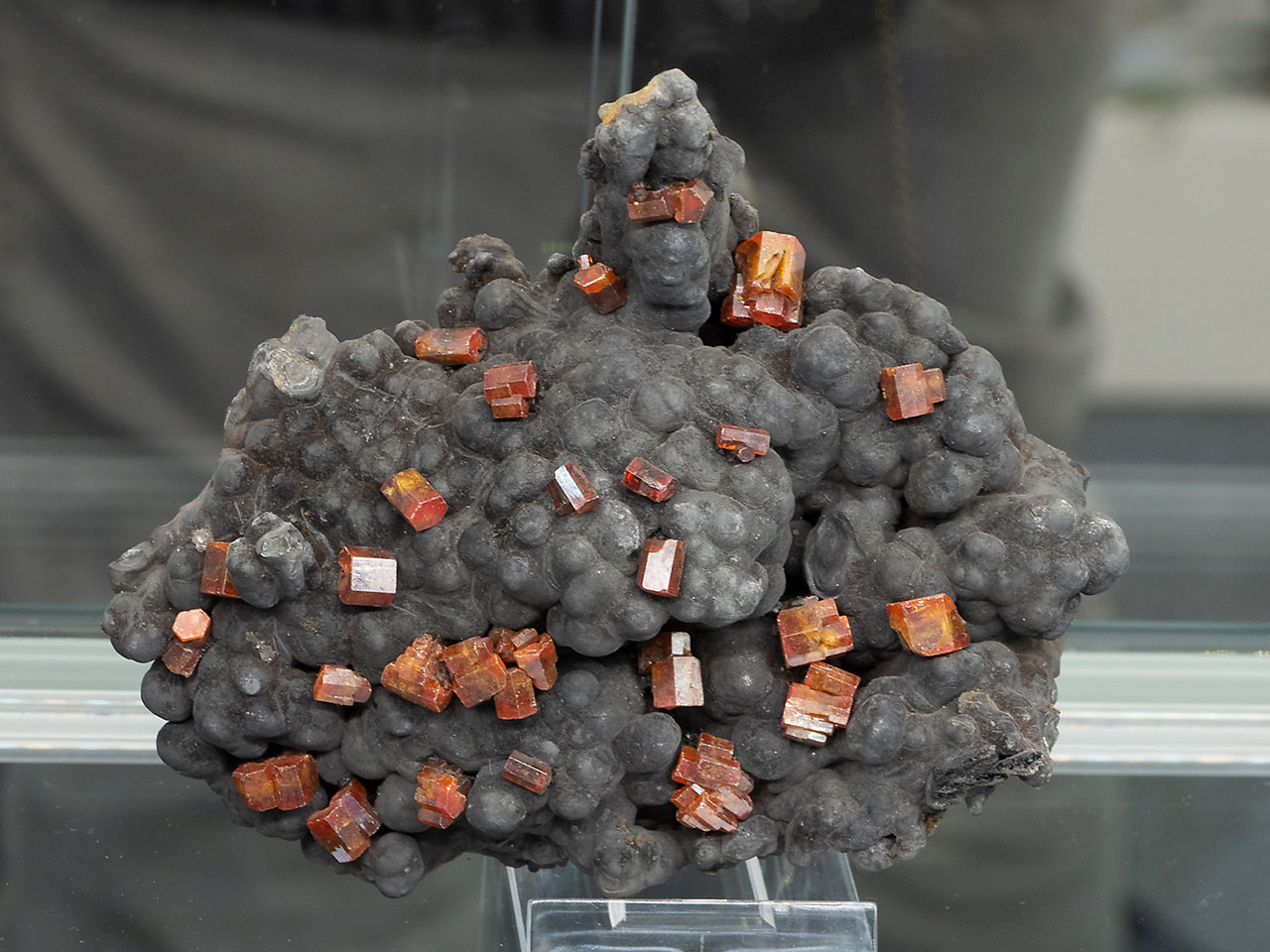
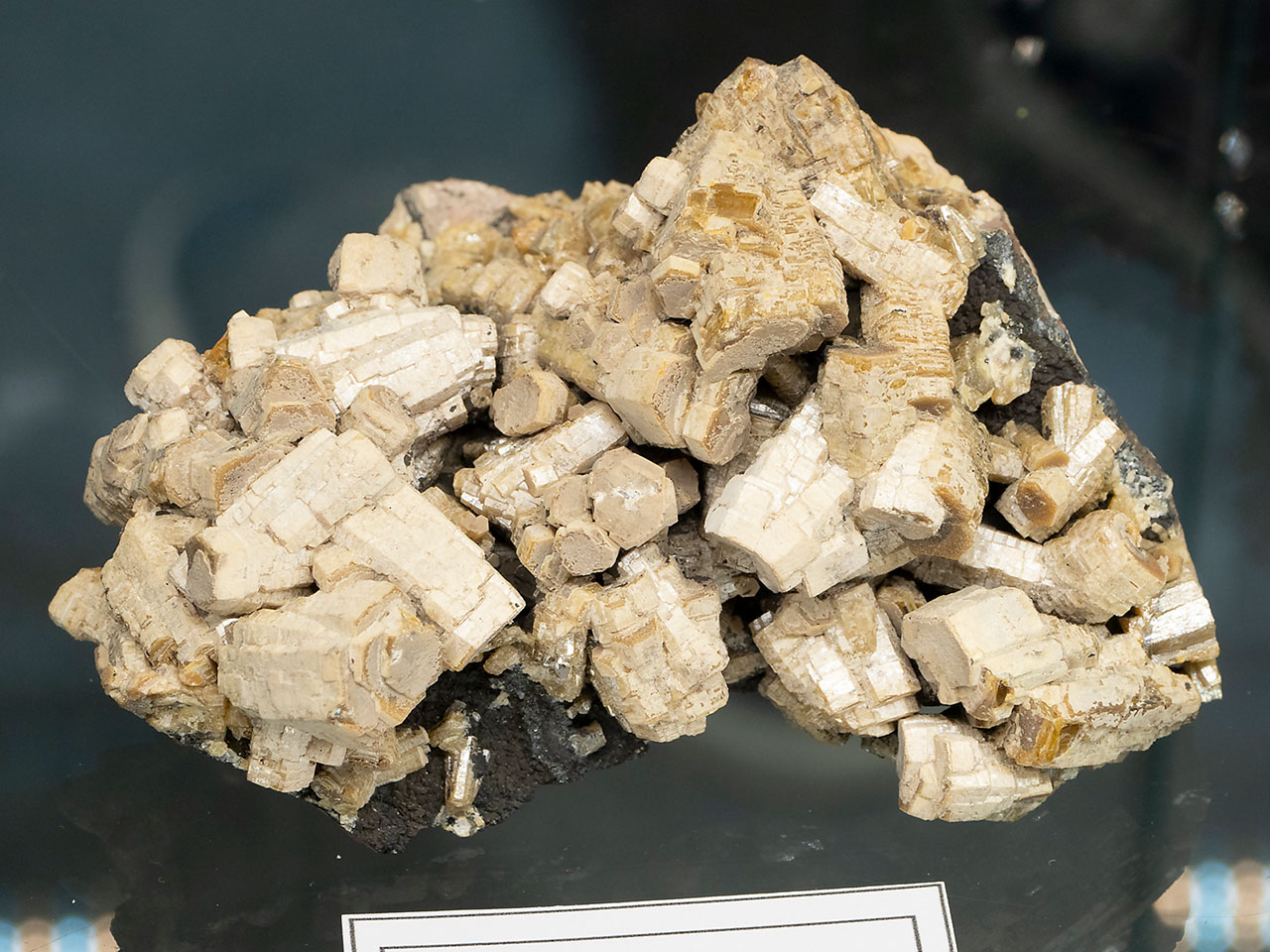
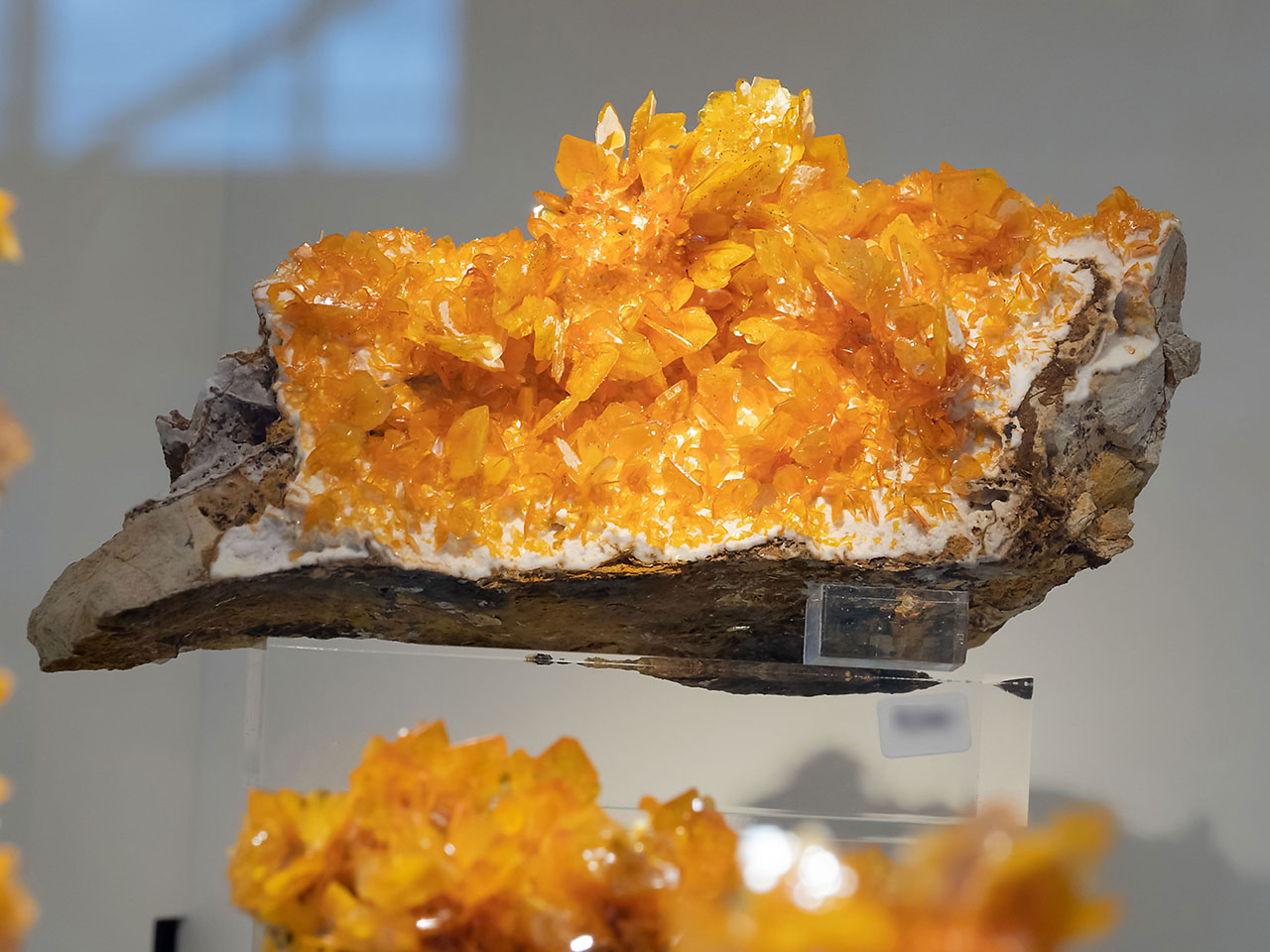
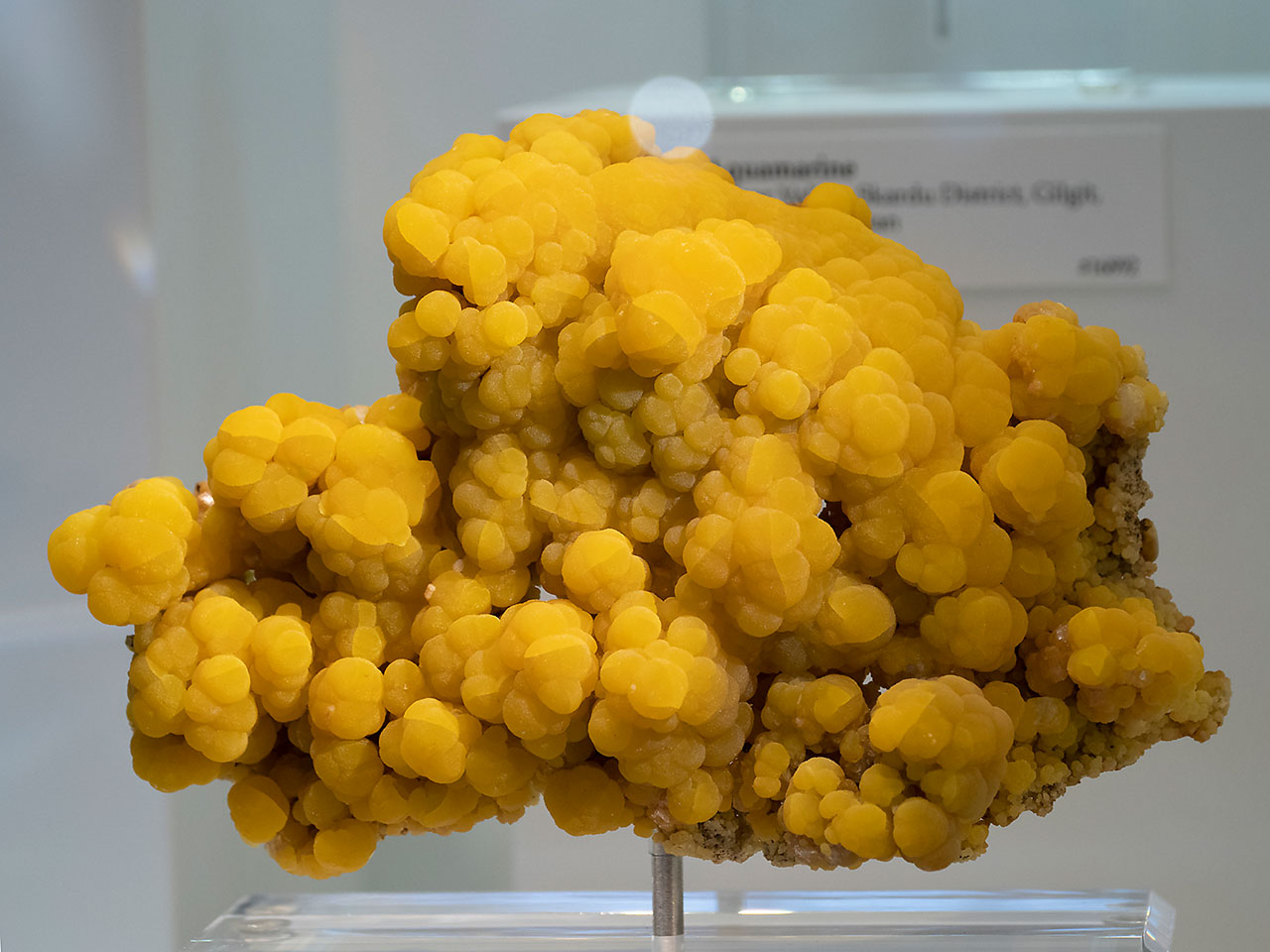
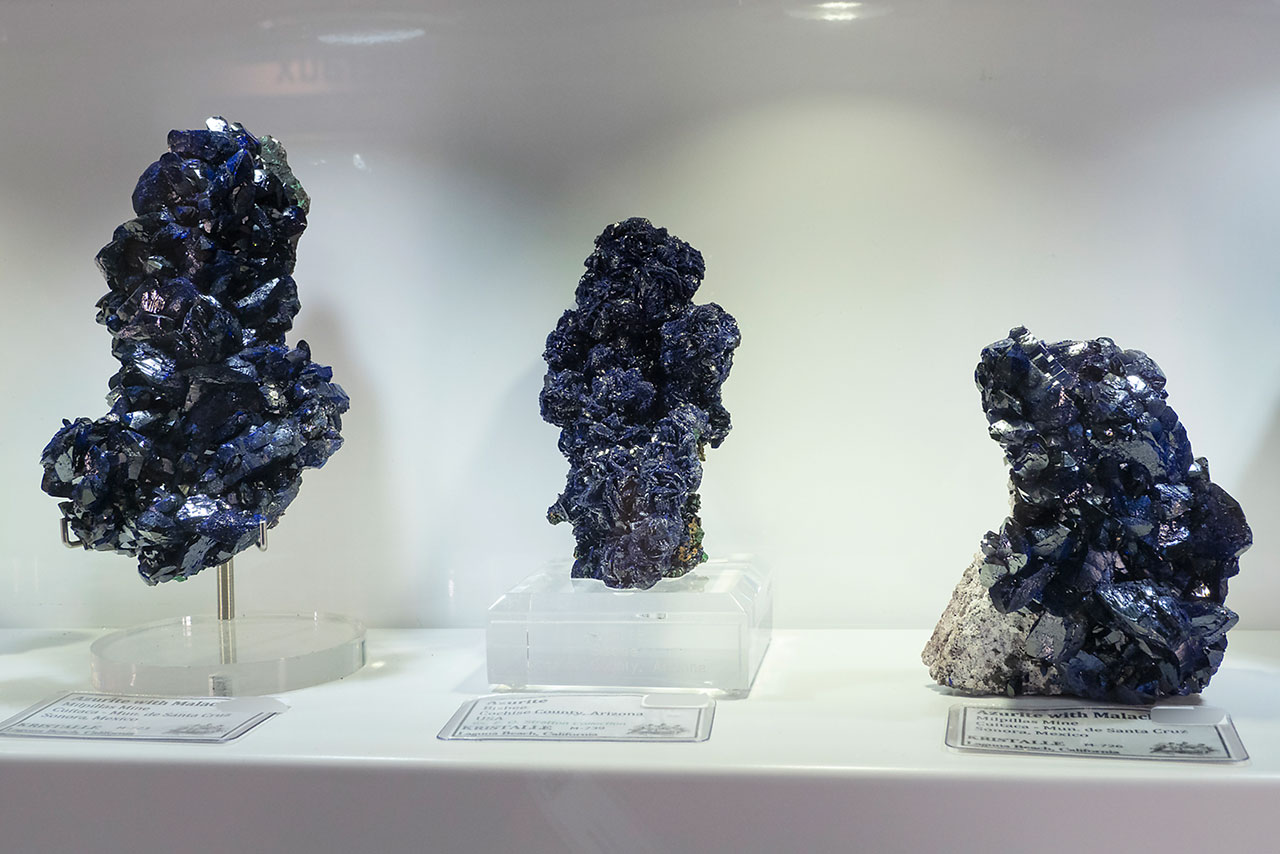
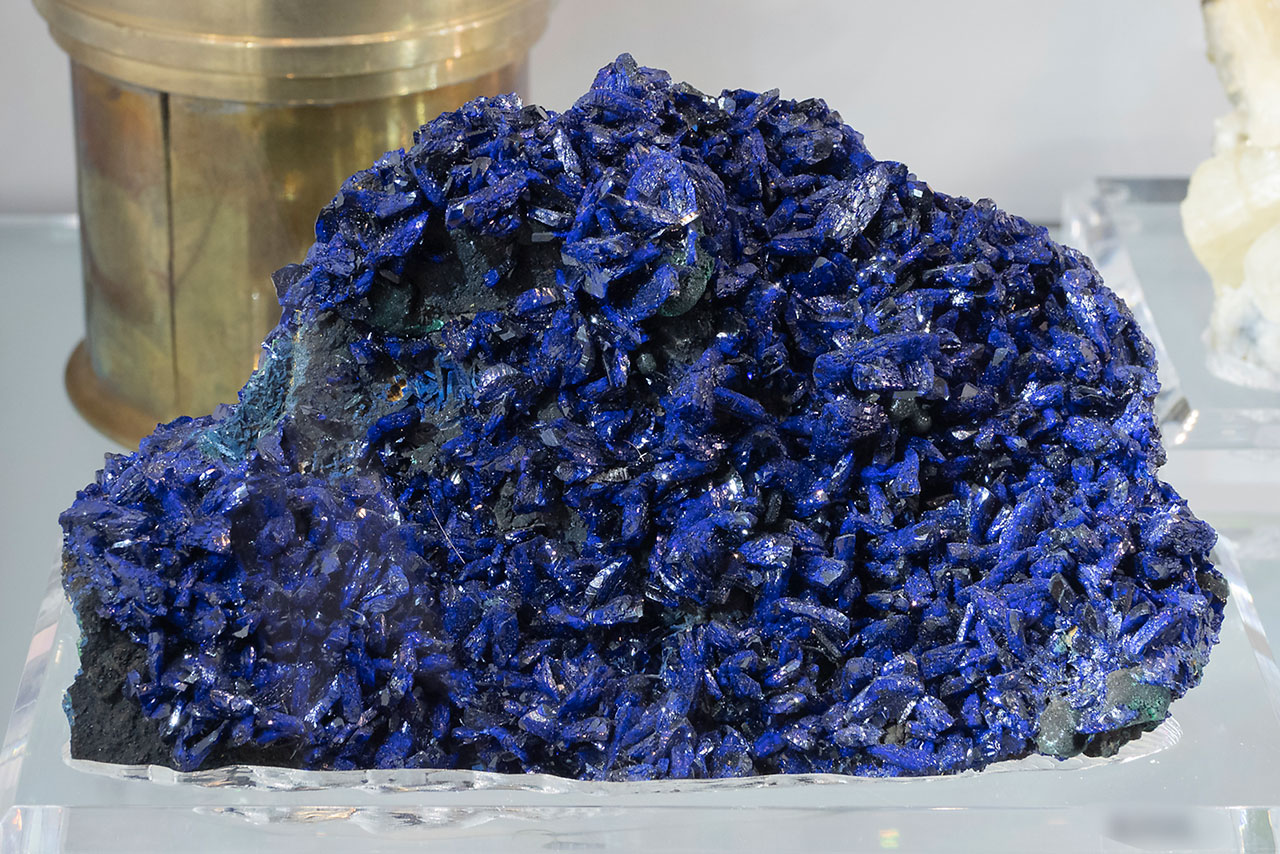
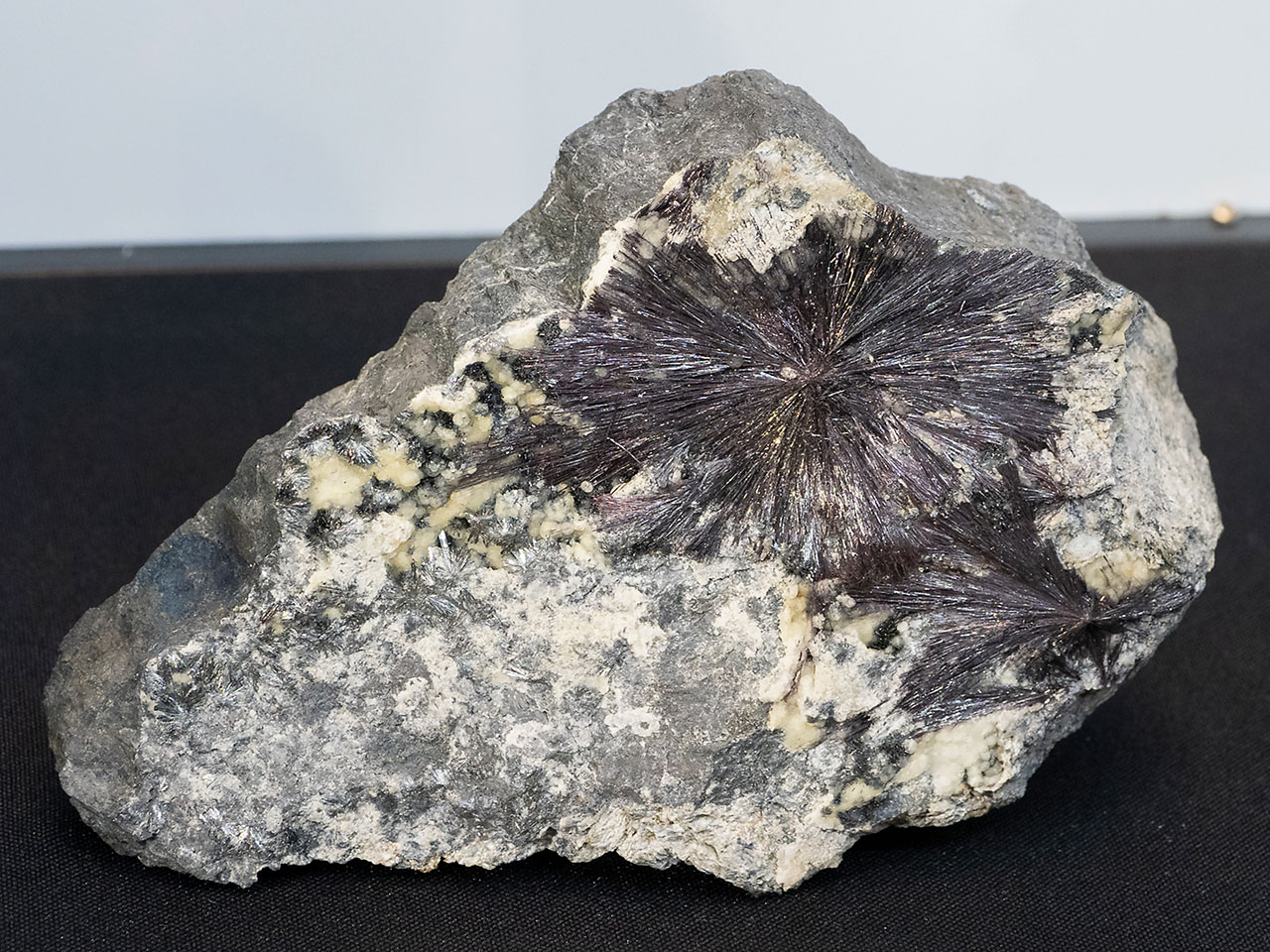
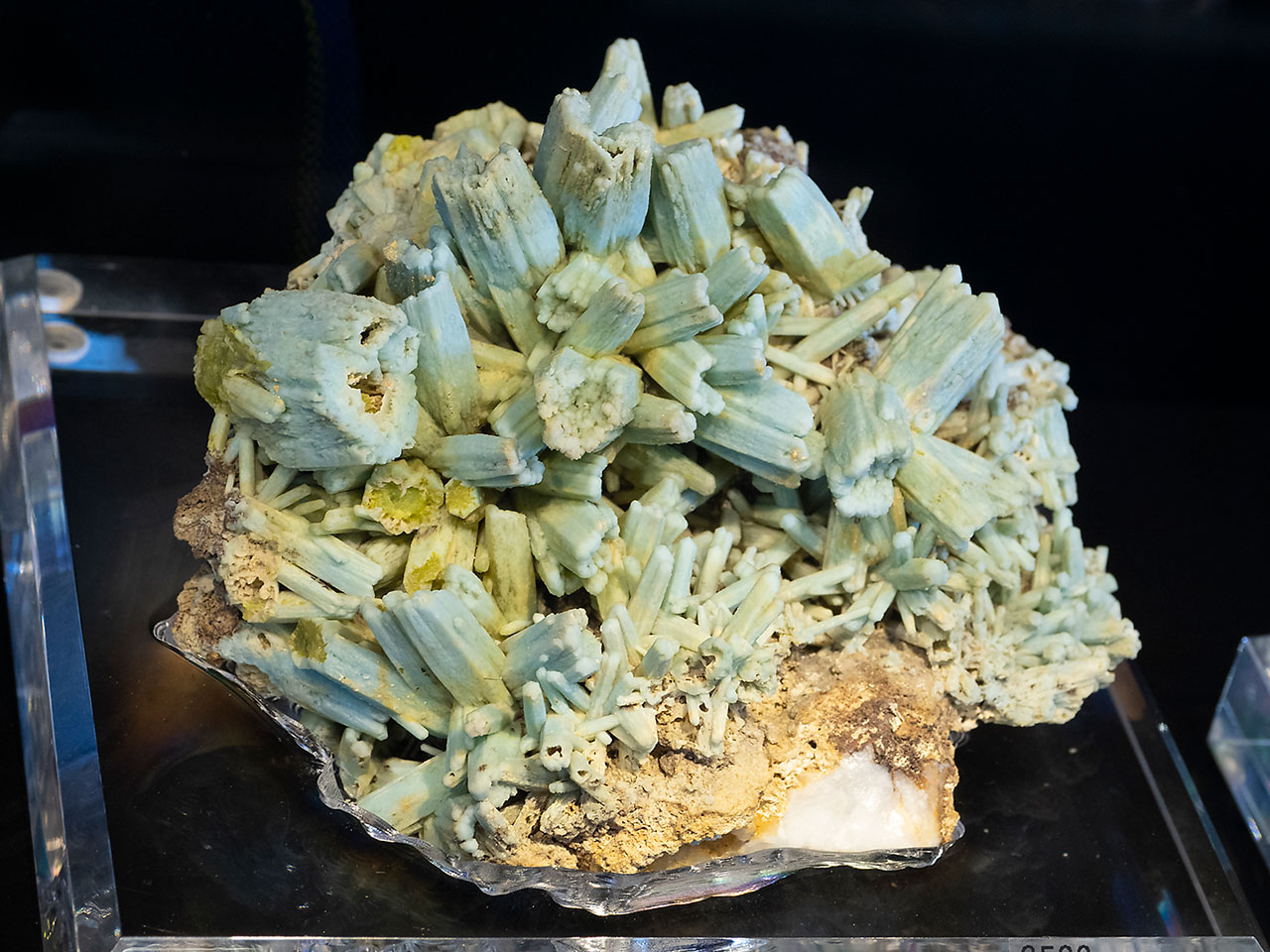
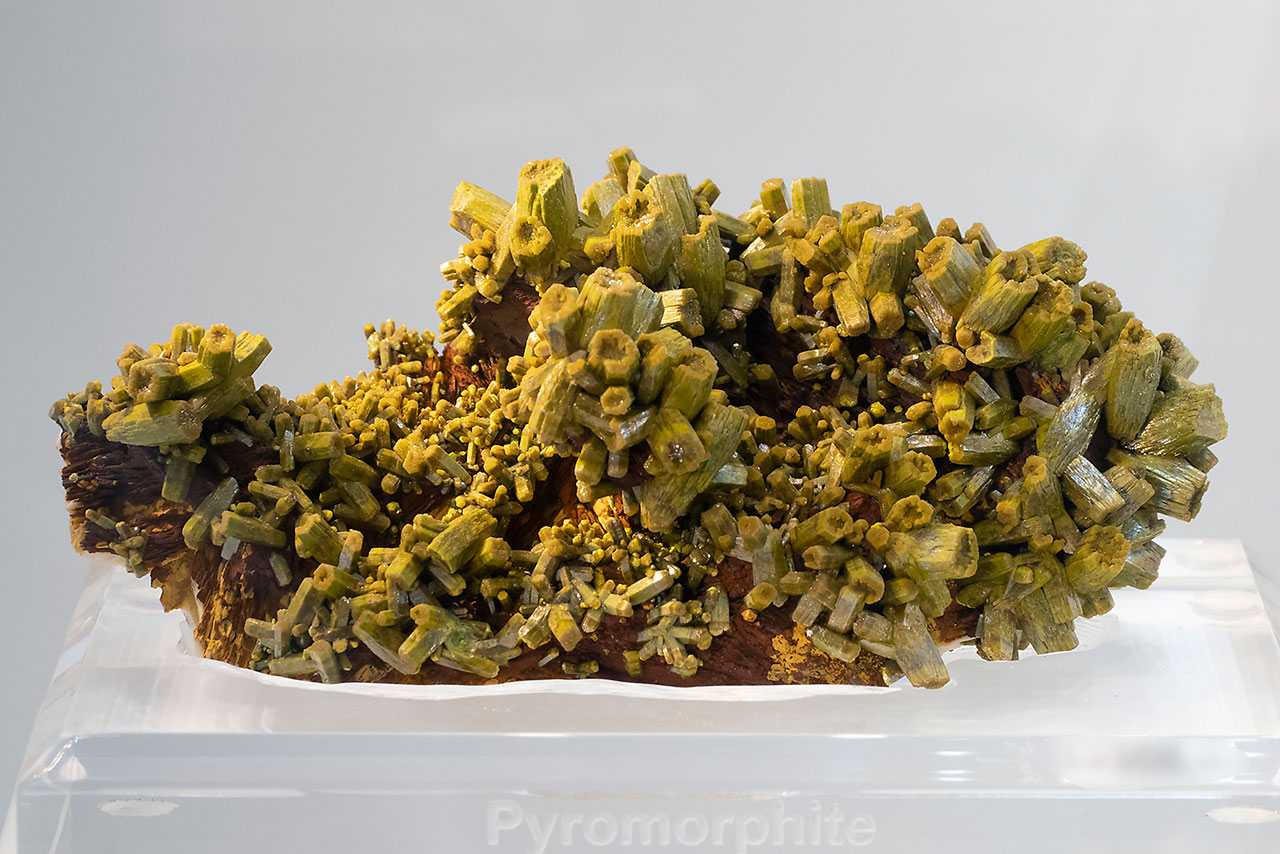
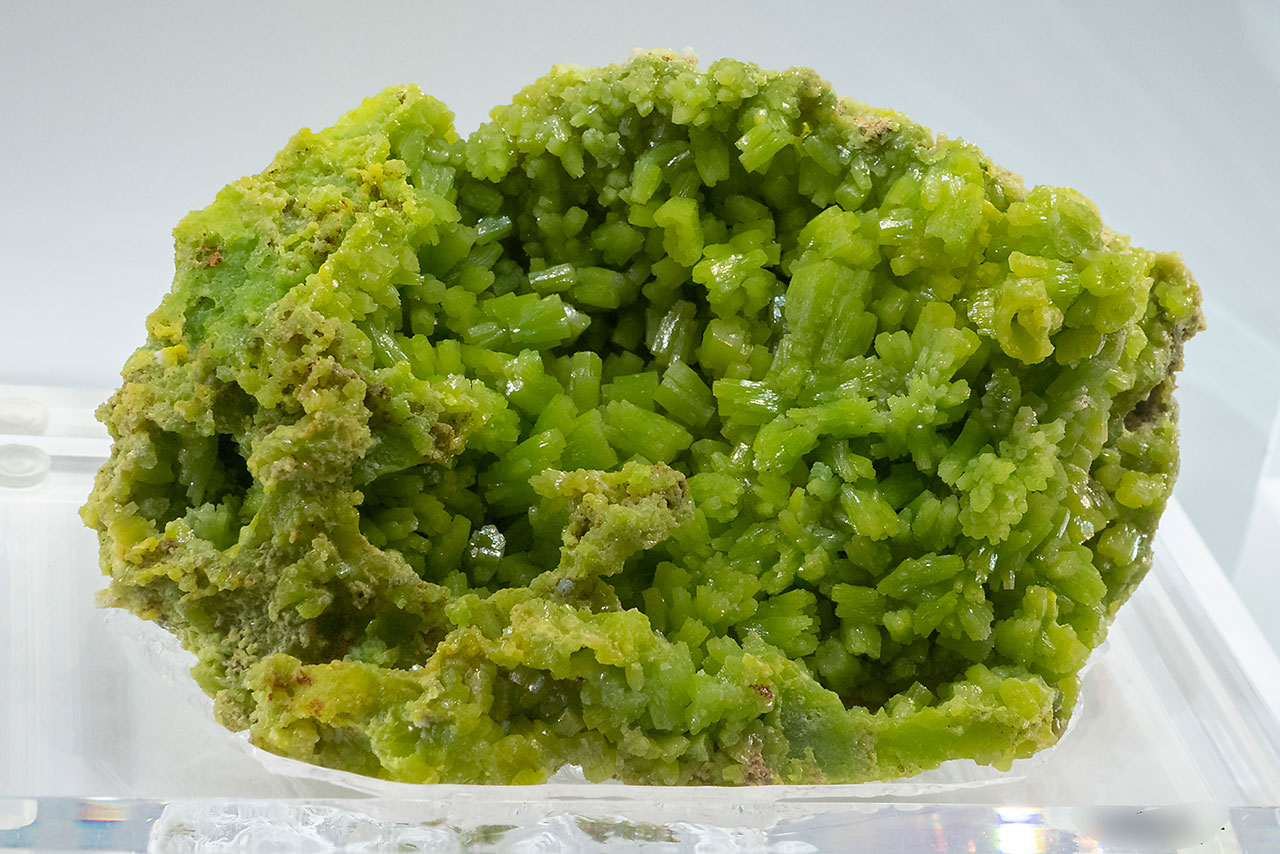
Various Mixed Minerals
There was a lot of other mixed minerals. The late red octahedrons of fluorite from Huanggangliang Mine, Inner Mongolia, China, were quite widespread lately. However, the large pieces with papercalcite by Cristalli, were among the really great ones.
Among the real news were the huge amethyst crystals from Congo. These were very similar to the large amethysts from Uruguay. The best ones were quickly gone.
I really liked the huge and high quality sulfur crystals from Sicily, offered by Riccardo Prato. Clear gypsum crystals on alabaster matrix from Zaragoza, Spain, were offered by Amazing Minerals.
There were also numerous red gemy sphalerite specimens from Áliva Mine, Picos de Europa, Spain, offered by several dealers. I’m not sure if this was caused by the late article in Mineralogical Record or vice versa. Anyway, very nice red gemmy sphalerite crystals over 10 cm were available!
There were interesting native antimony crystals from Lake George, New Brunswick, Canada, and native bismuth crystals from Schlema, Germany, offered by Kristalle. KARP had interesting Russian minerals in stock – huge emeralds in matrix from Malyshevo, new (2020 found) large cluster of fluorite with shiny galena from Dalnegorsk, and also decent clusters of datolite from Dalnegorsk.
Anton Watzl had probably the best spinel law twinned crystallized gold pieces from Aouint Ighoman, Guelmim-Oued Noun Region, Morocco. His stock also included nice selection of recent gemmy sultanite diaspores from Mugla, Turkey. There were also romanéchite specimens from Királyszentistván, Hungary, available in all sizes. The find was recently published in Lapis.
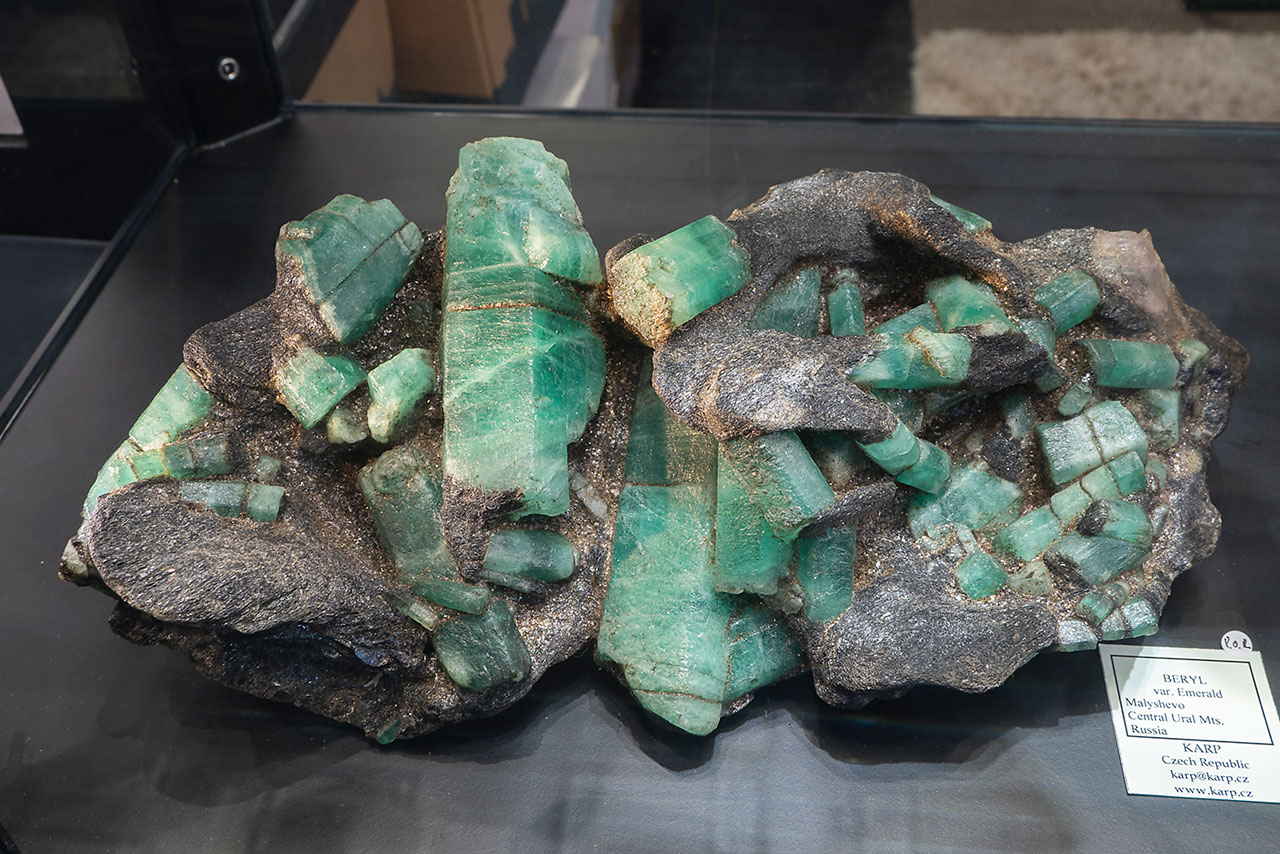
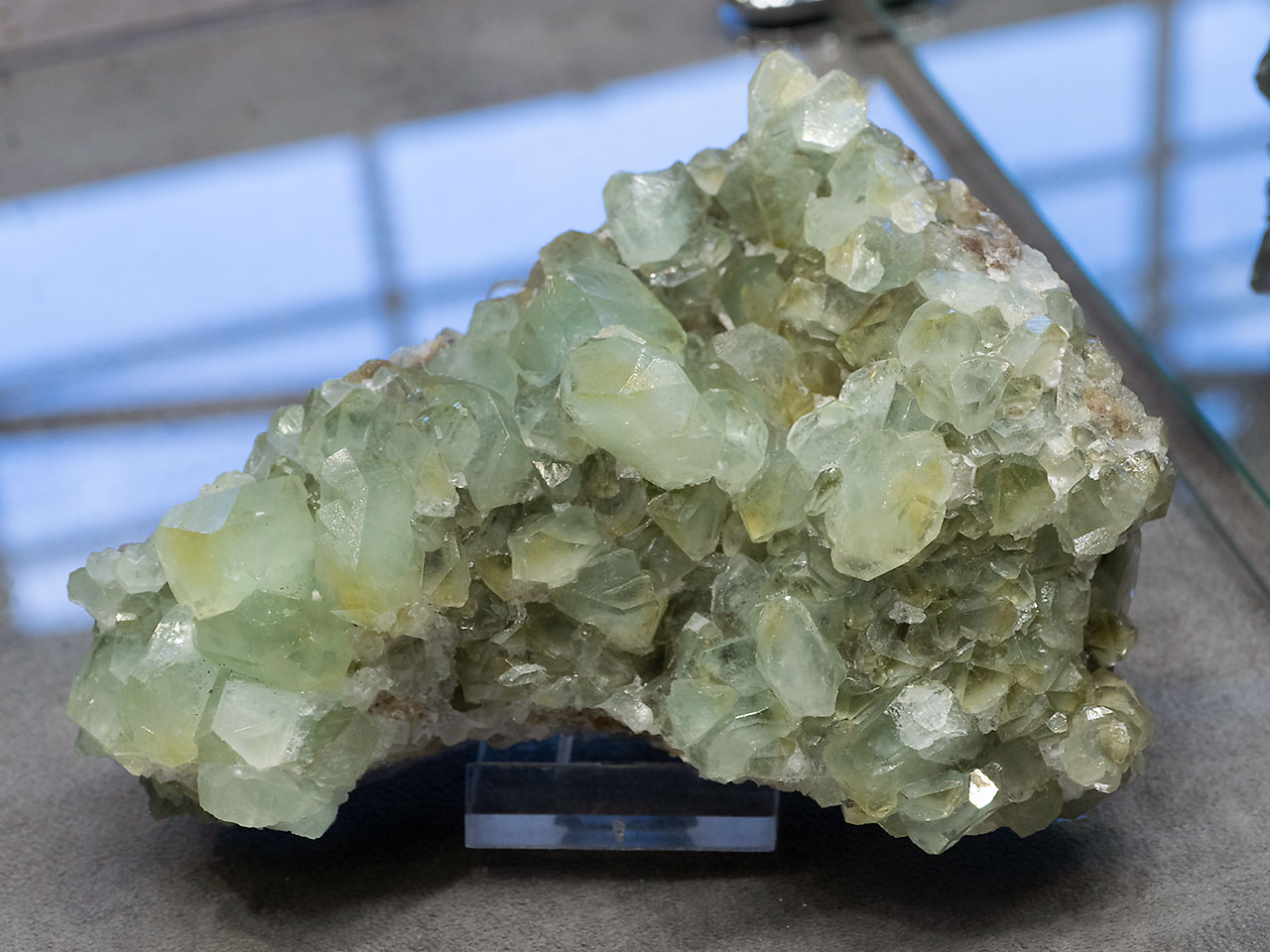
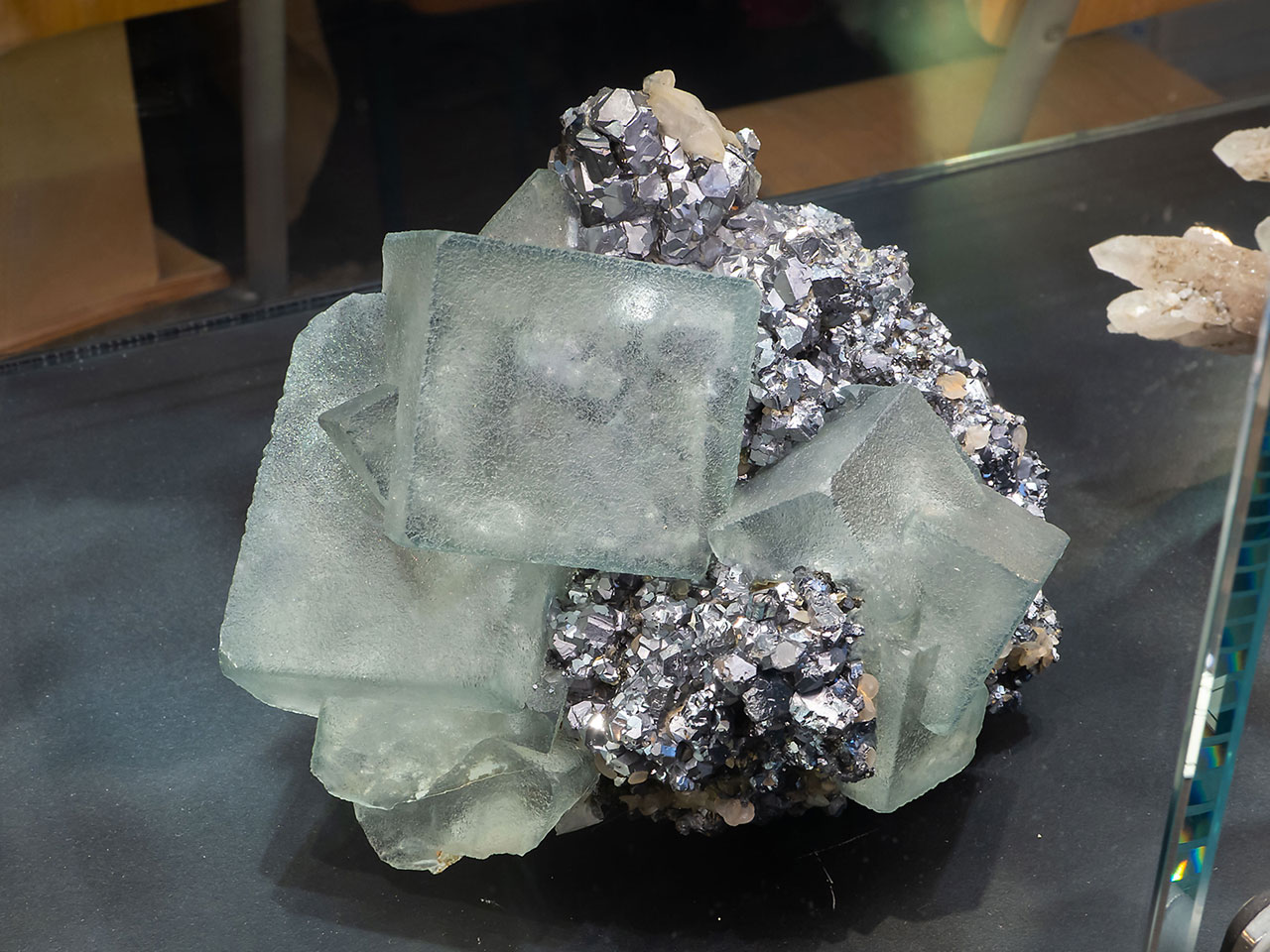

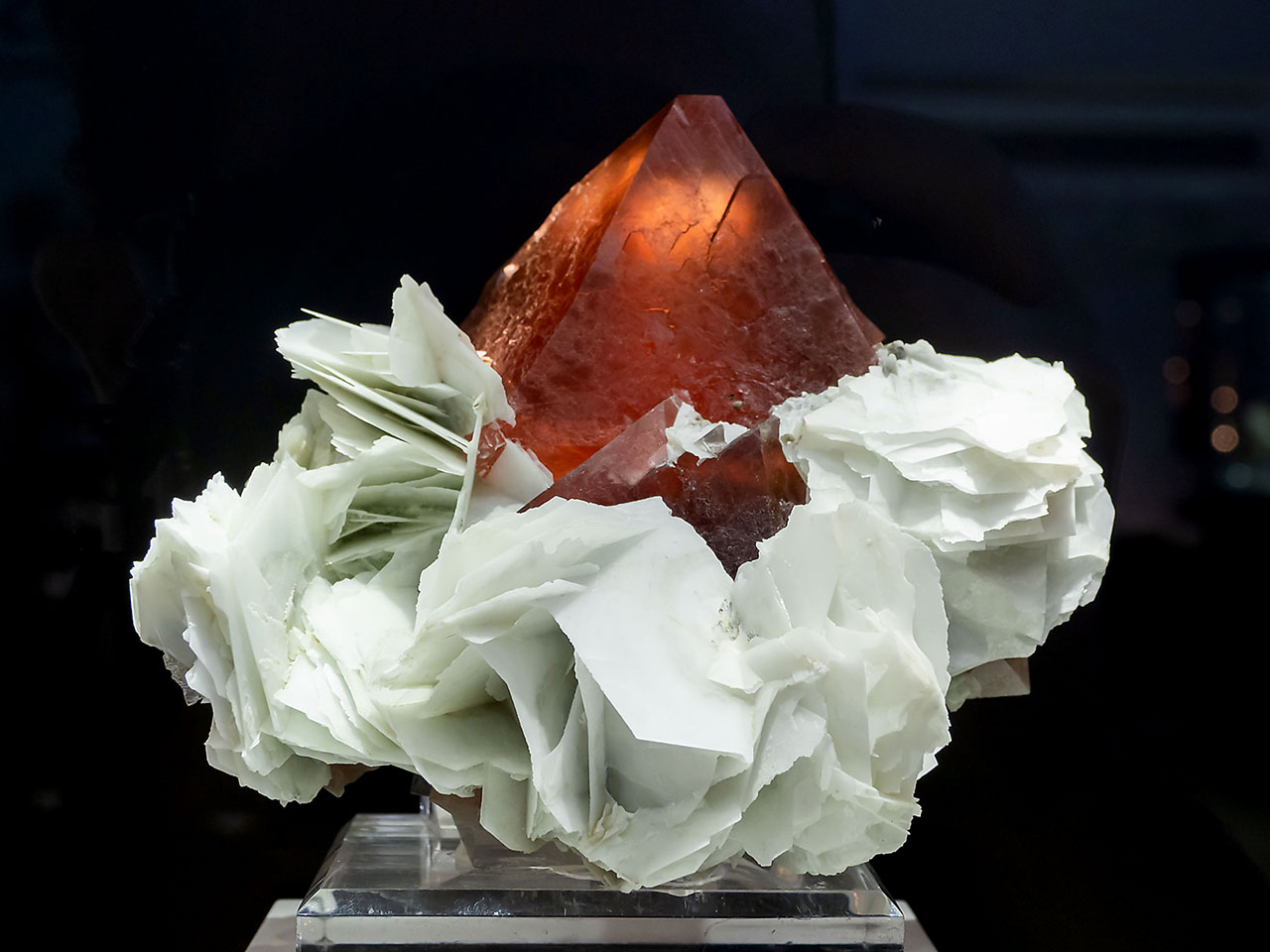

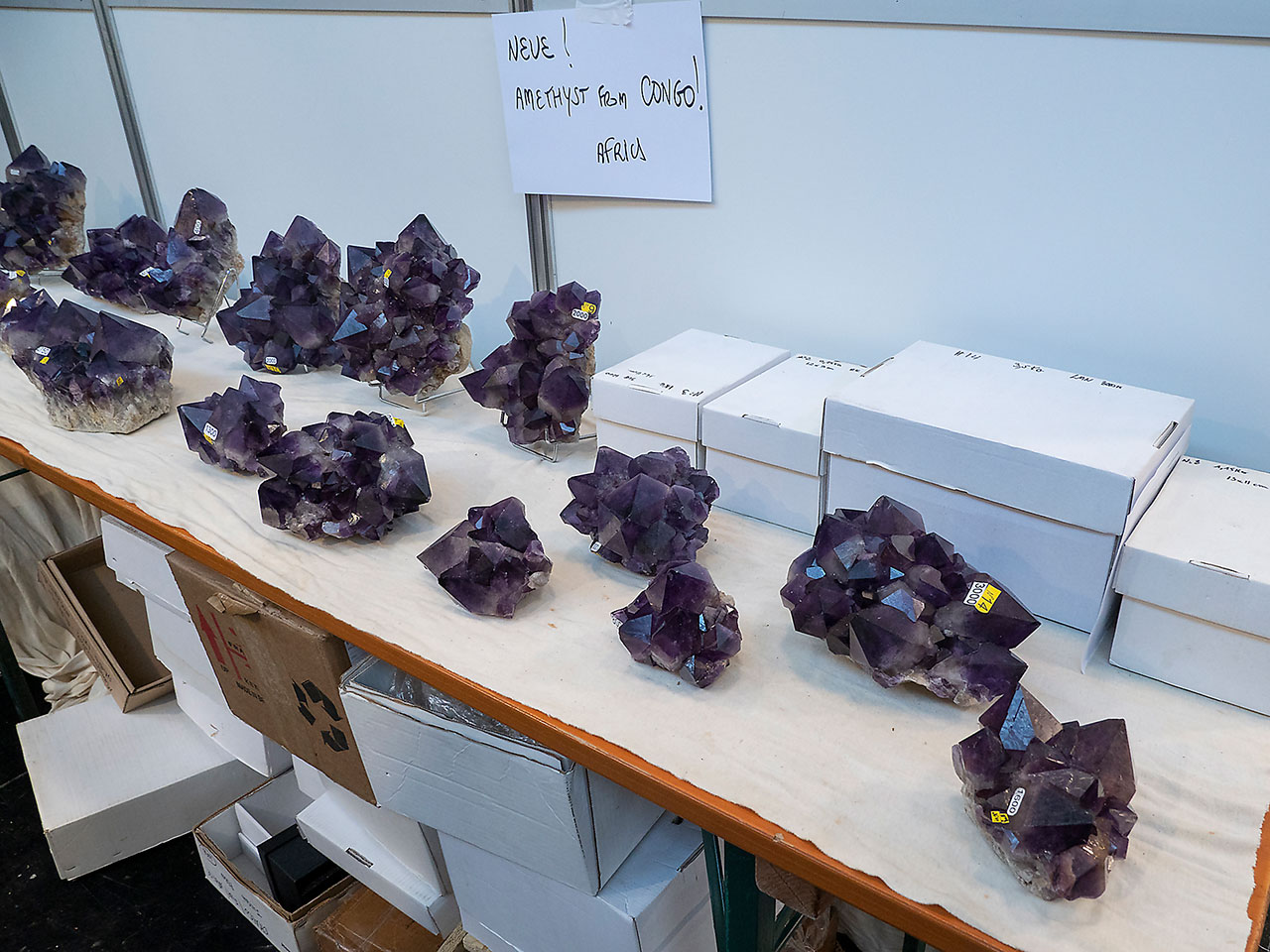
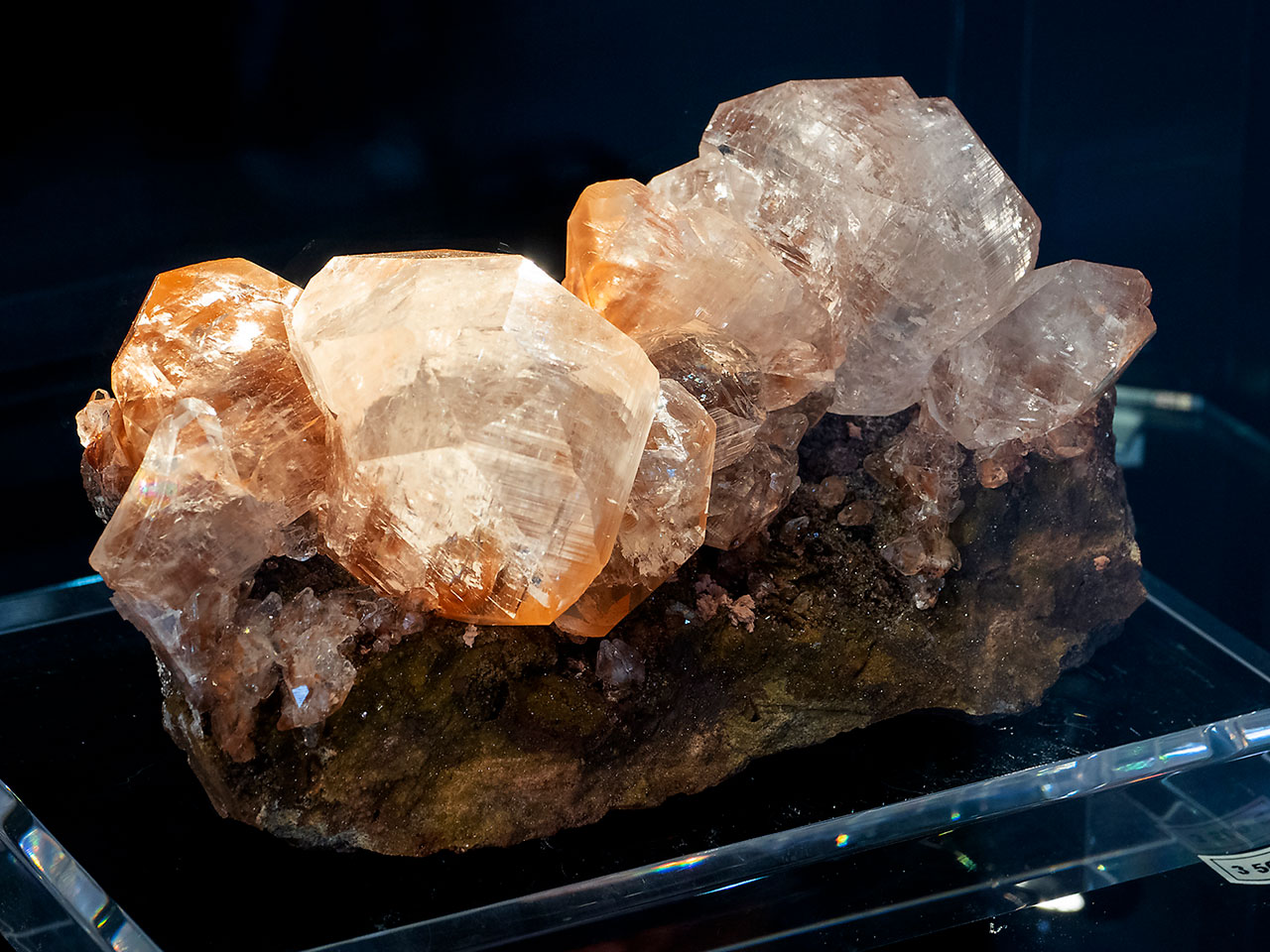
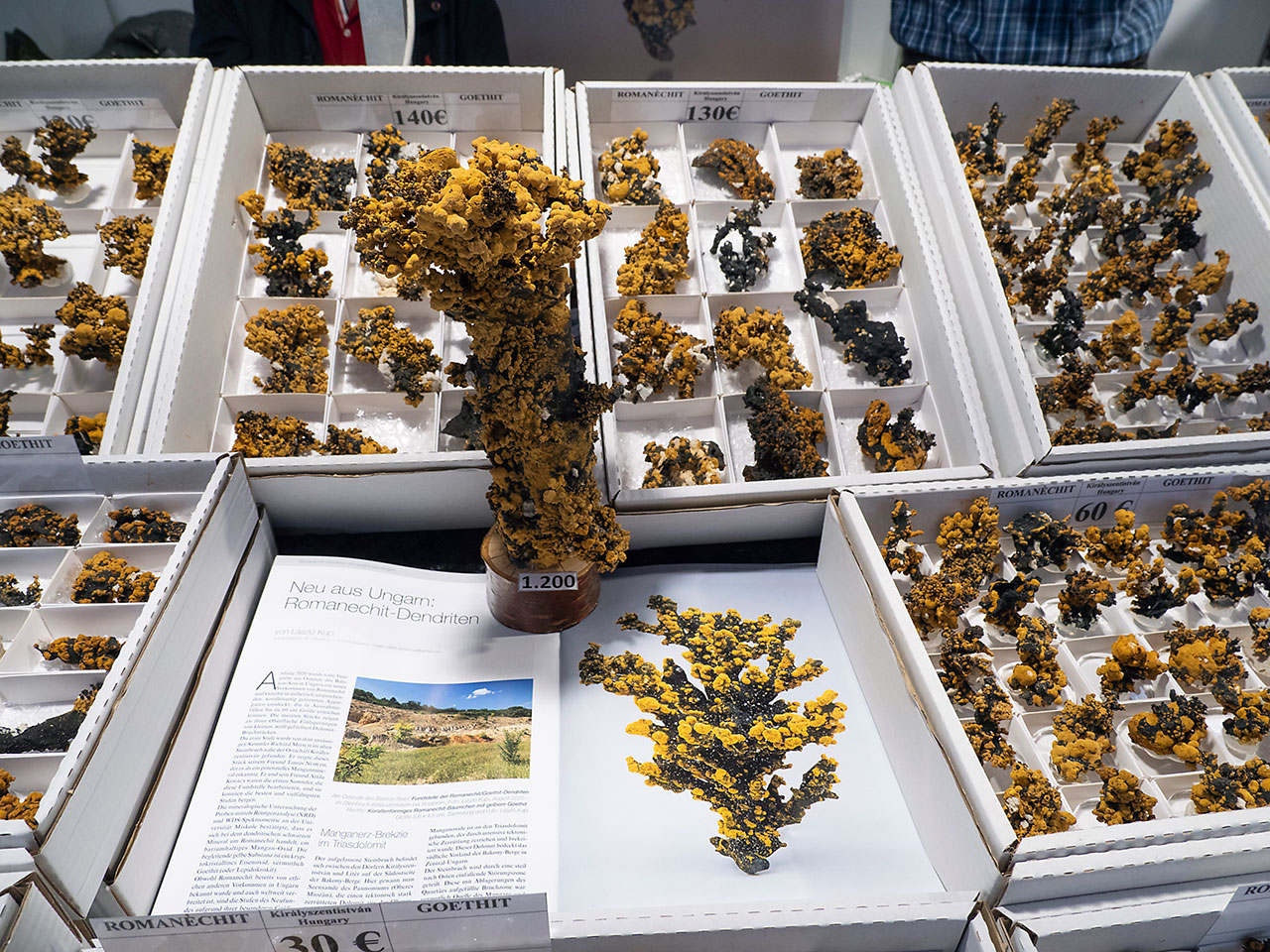
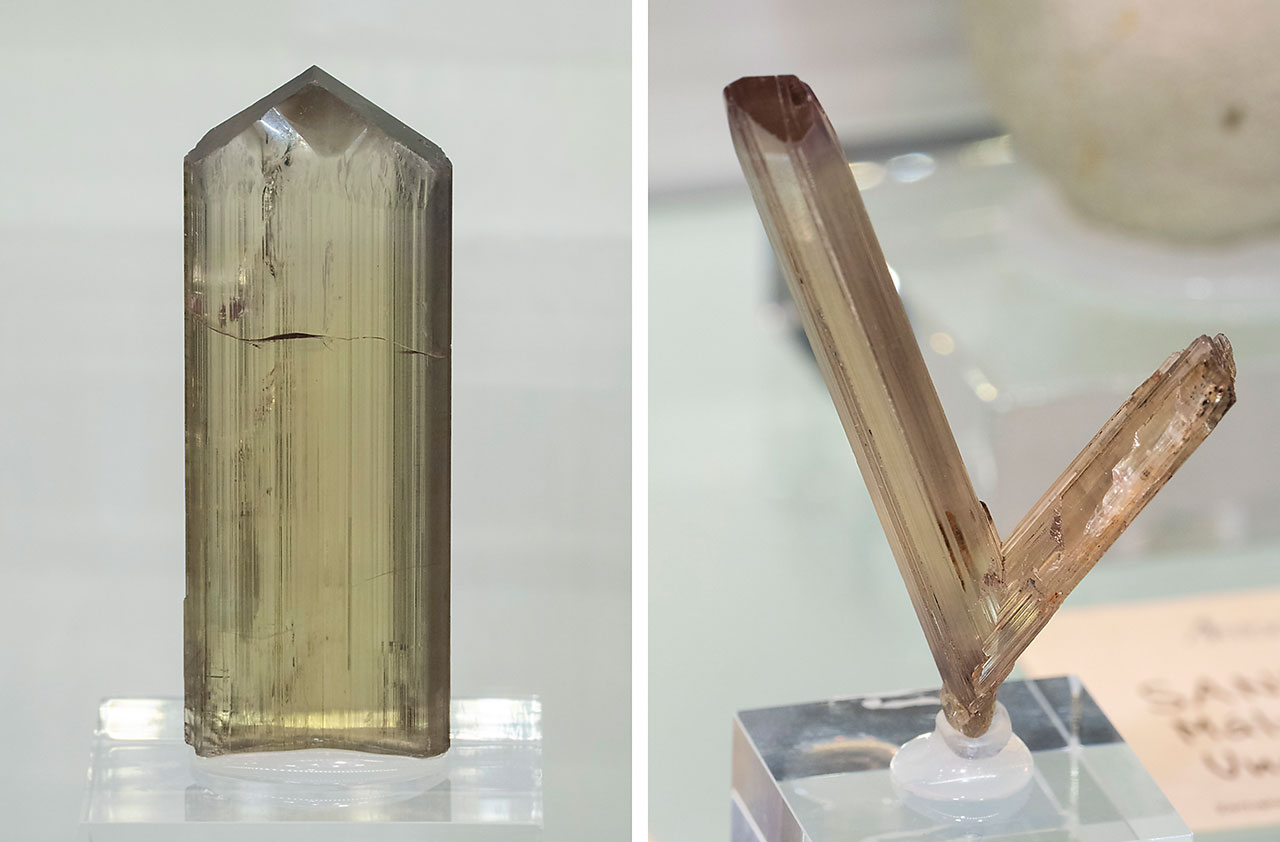
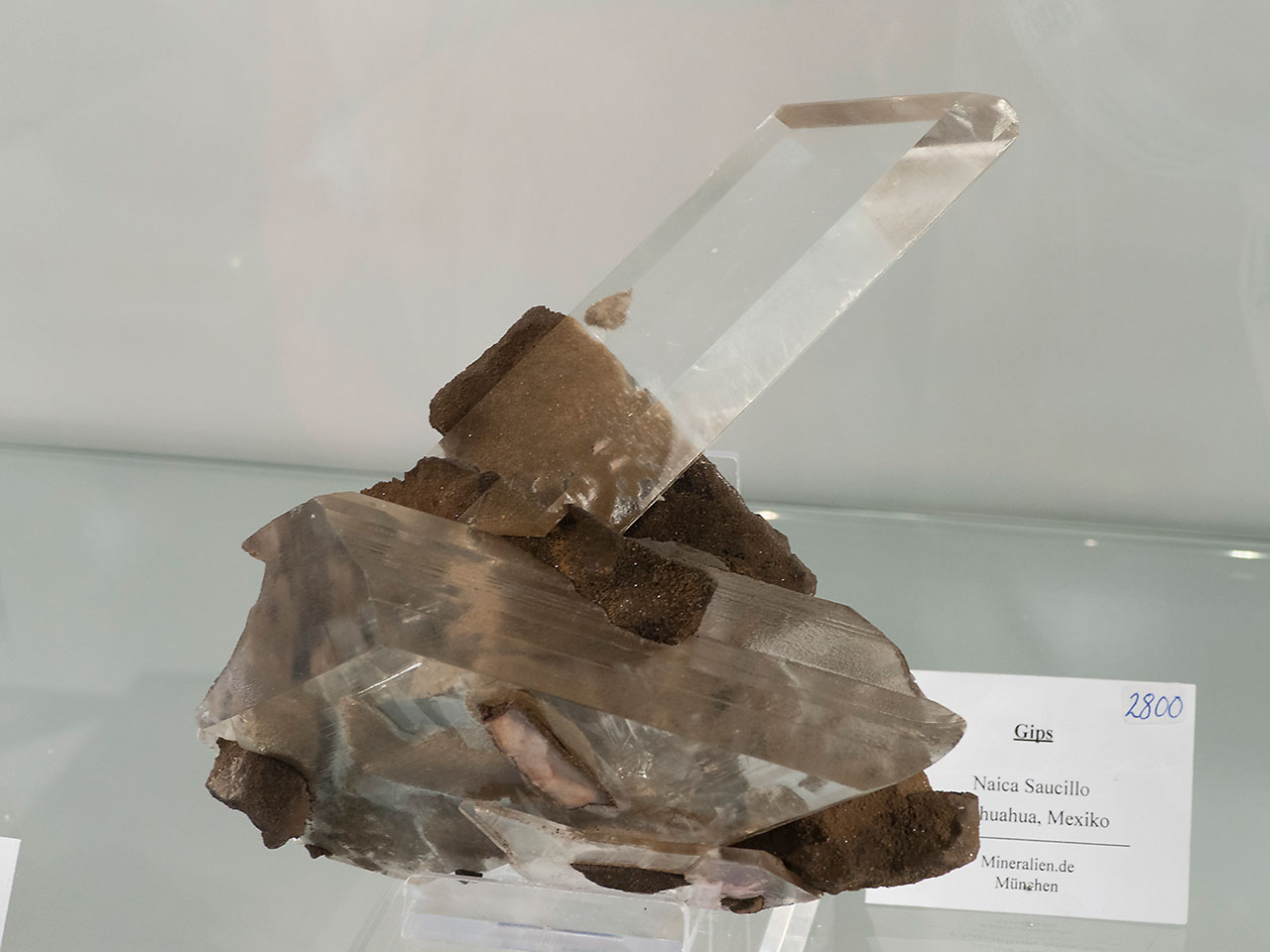

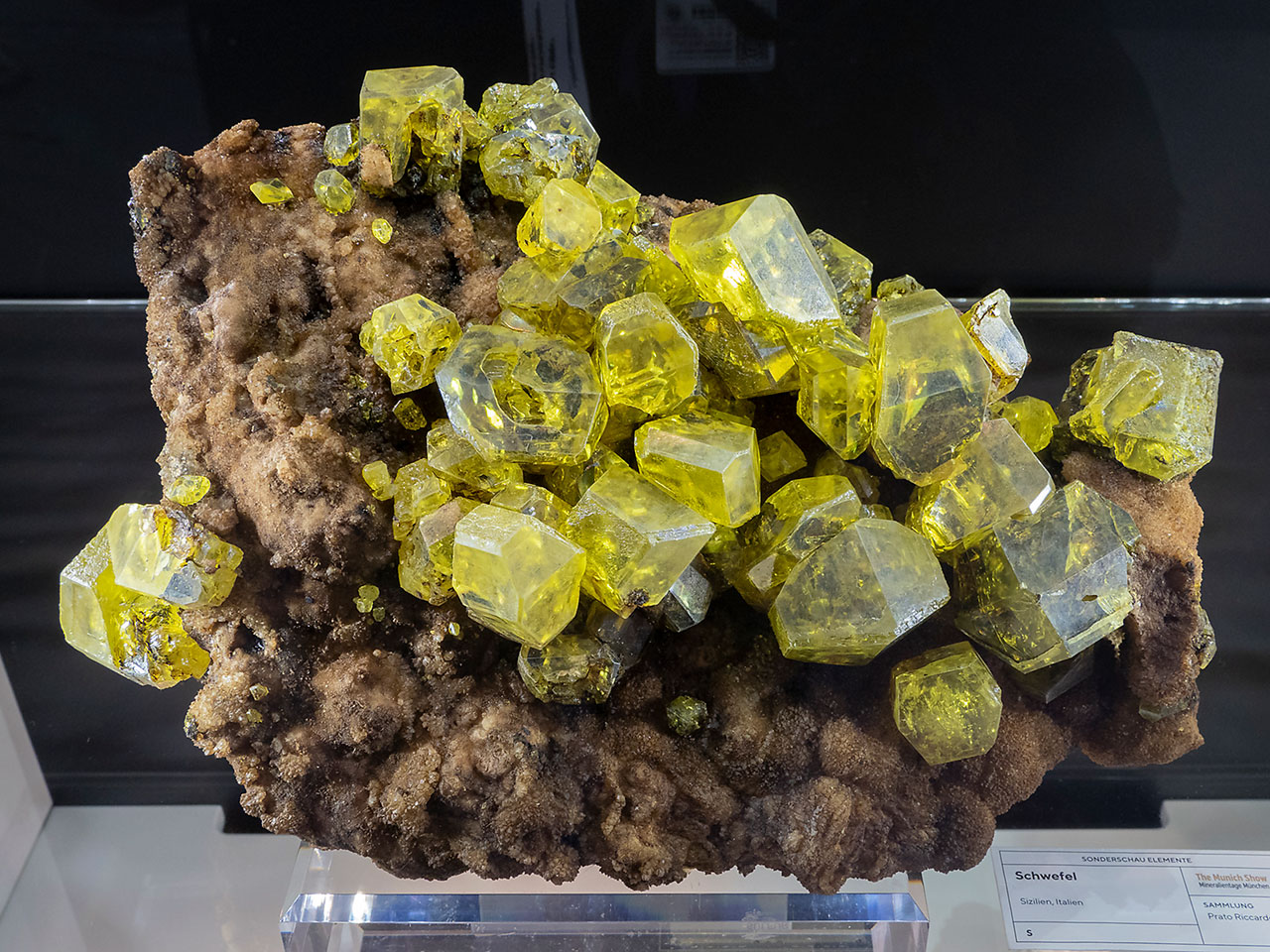

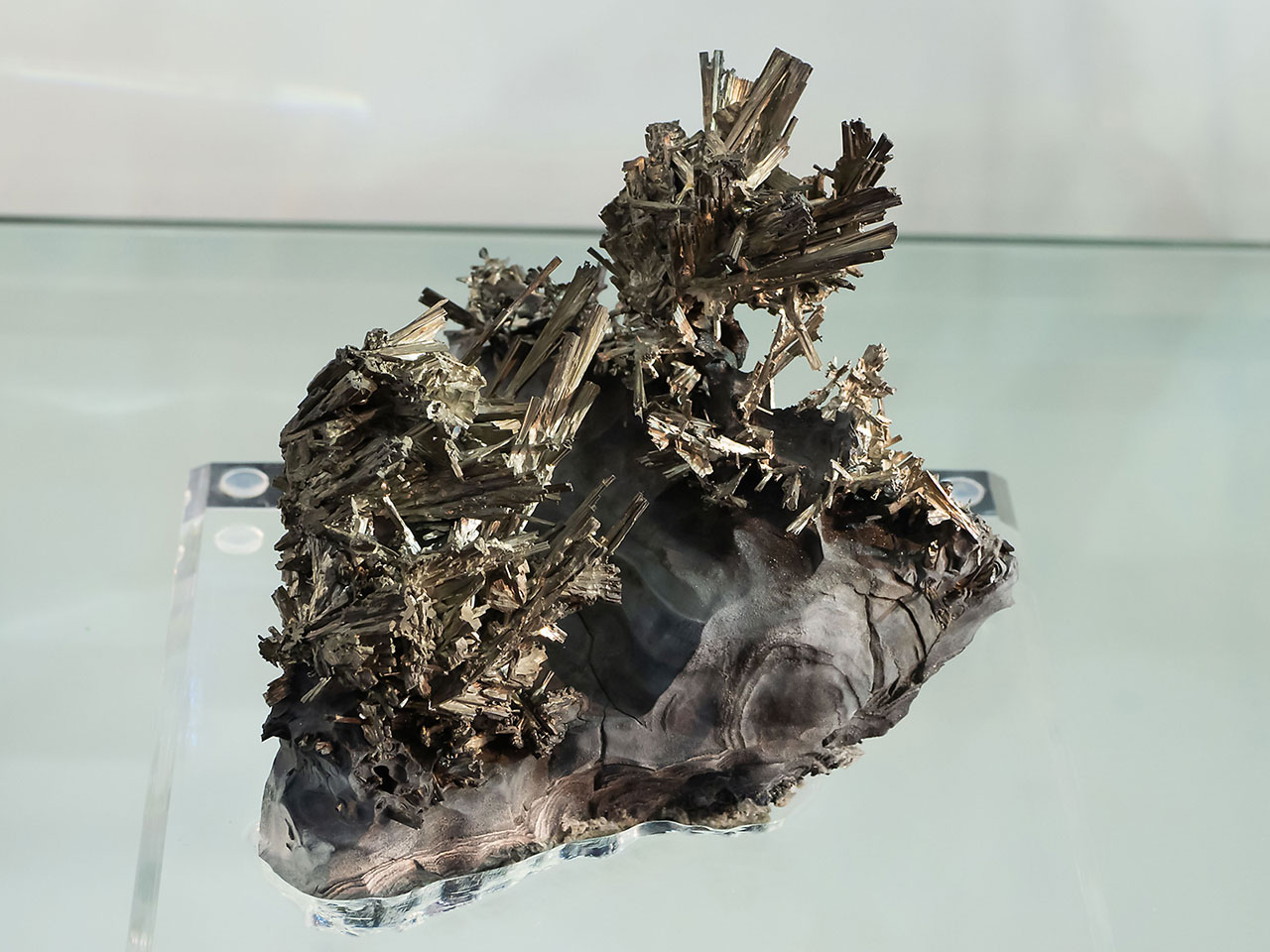
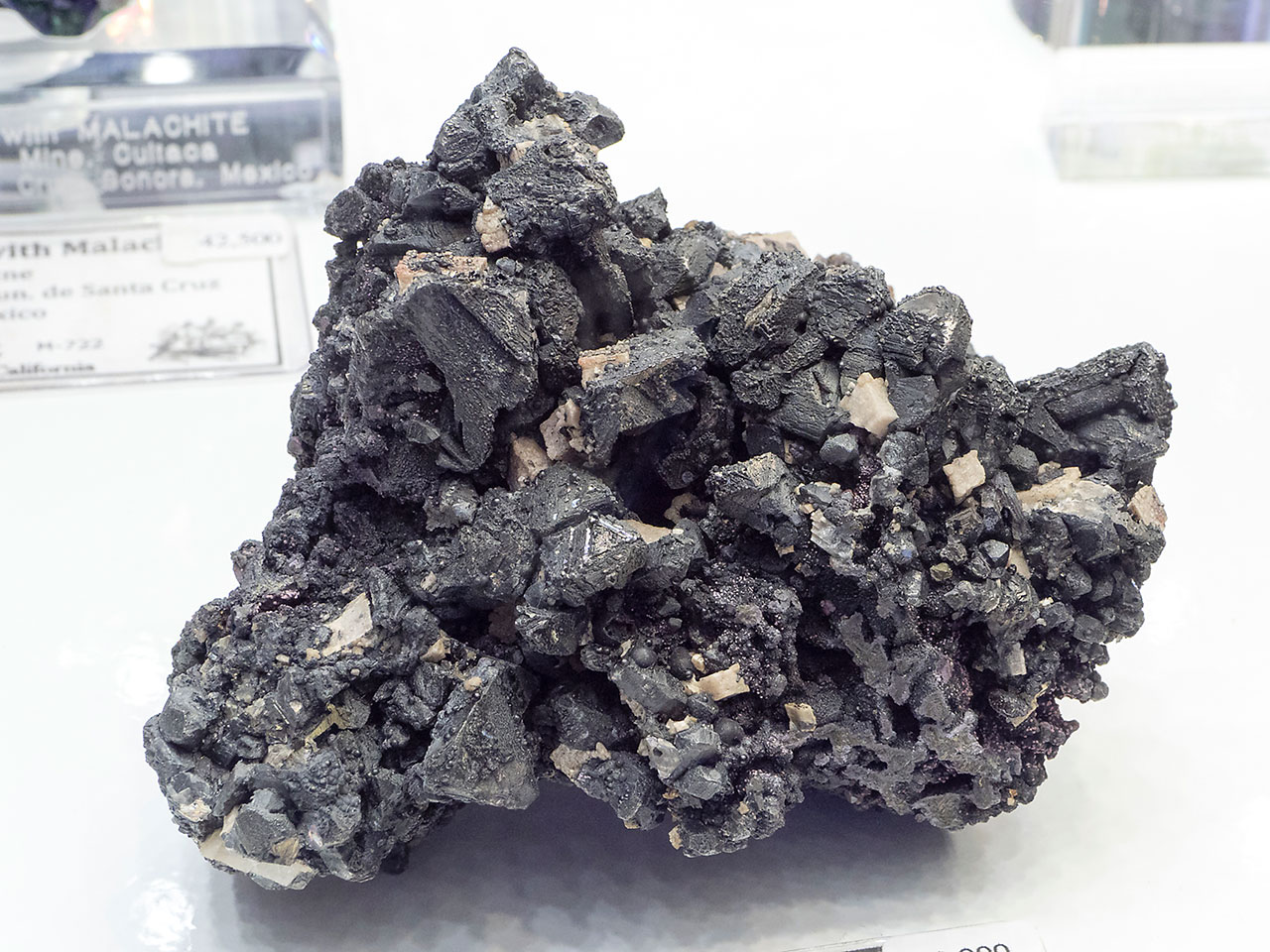
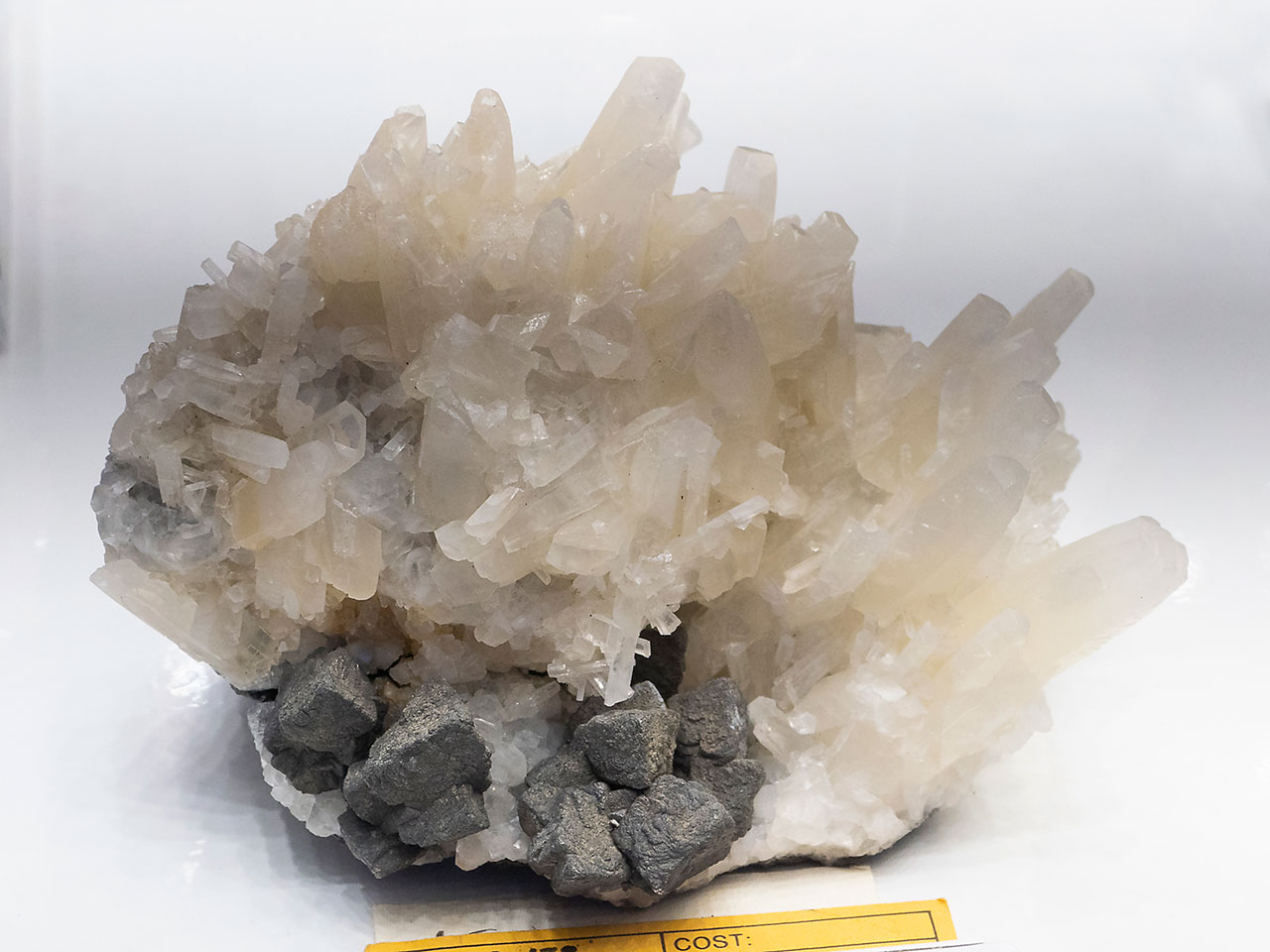
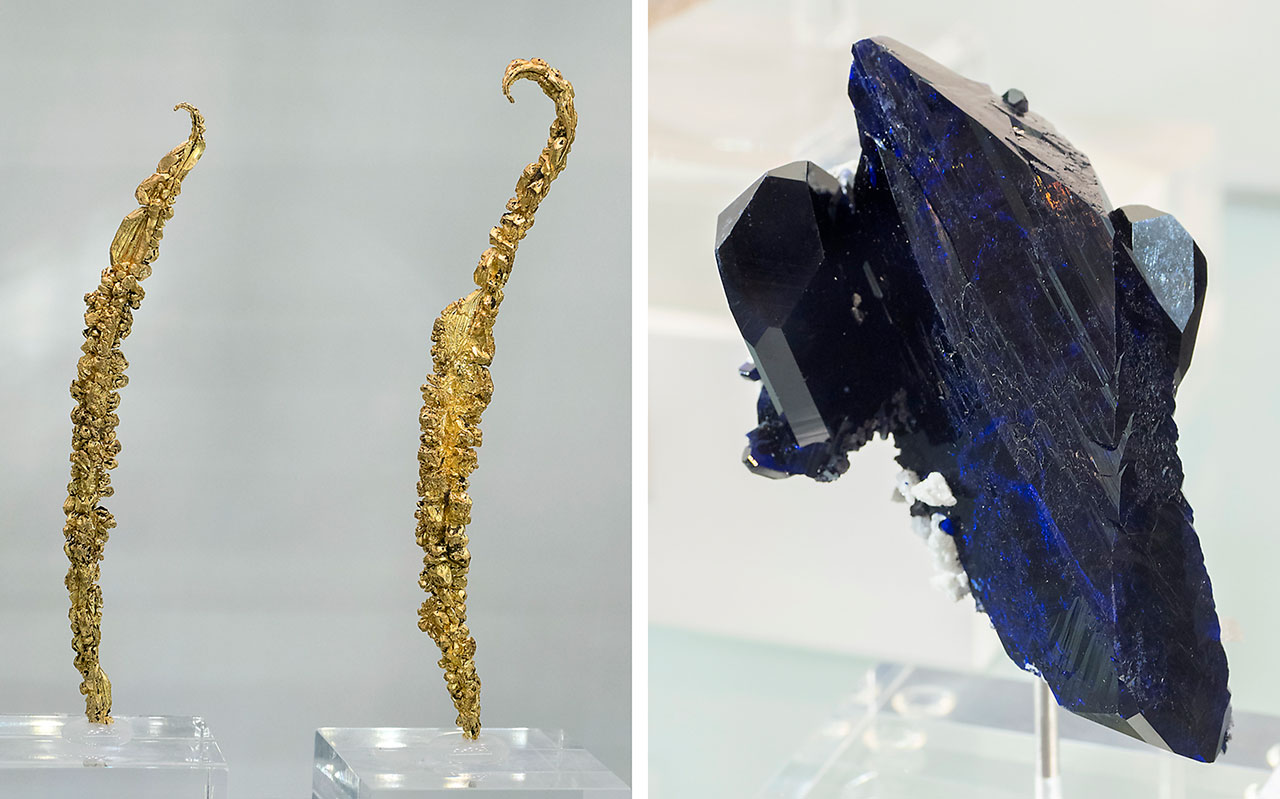
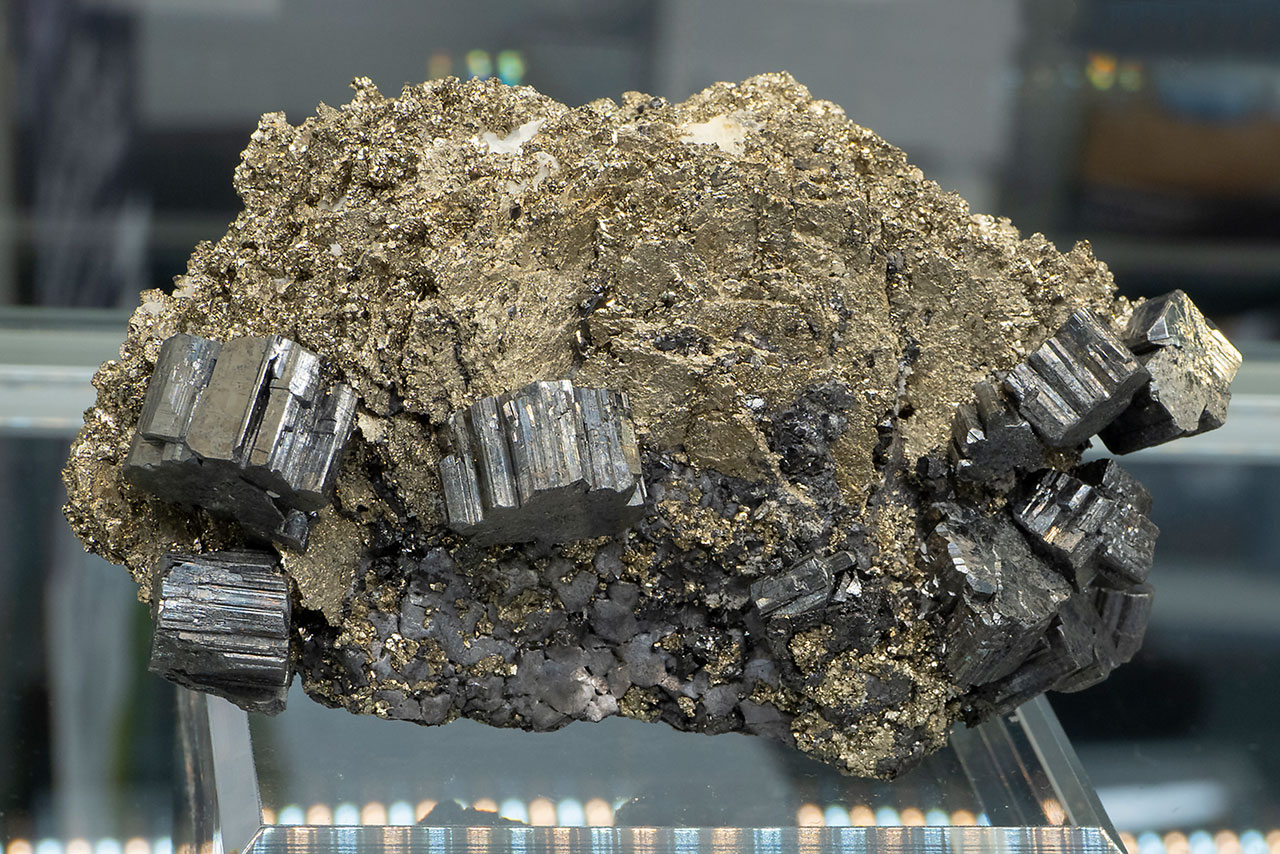
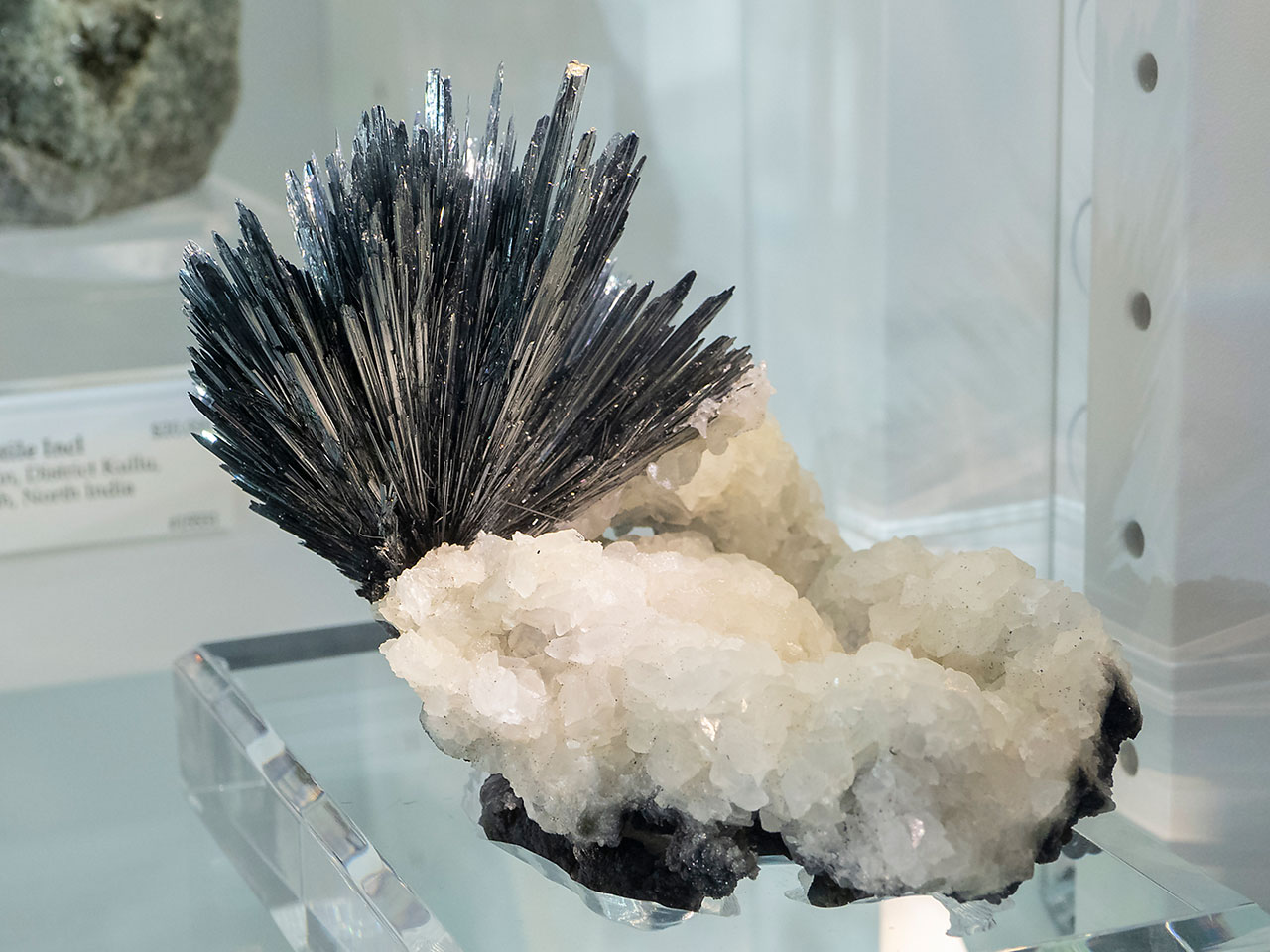
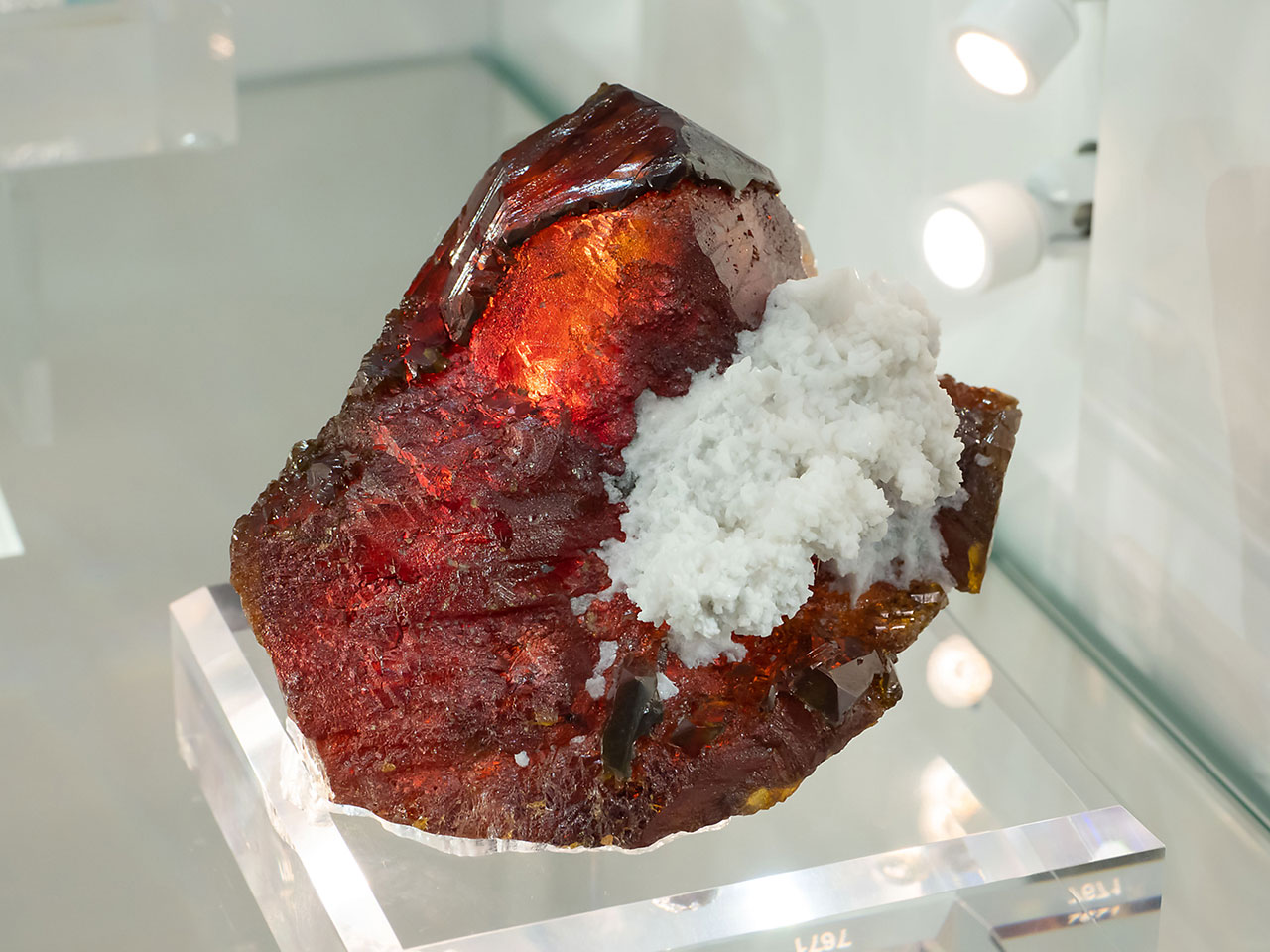
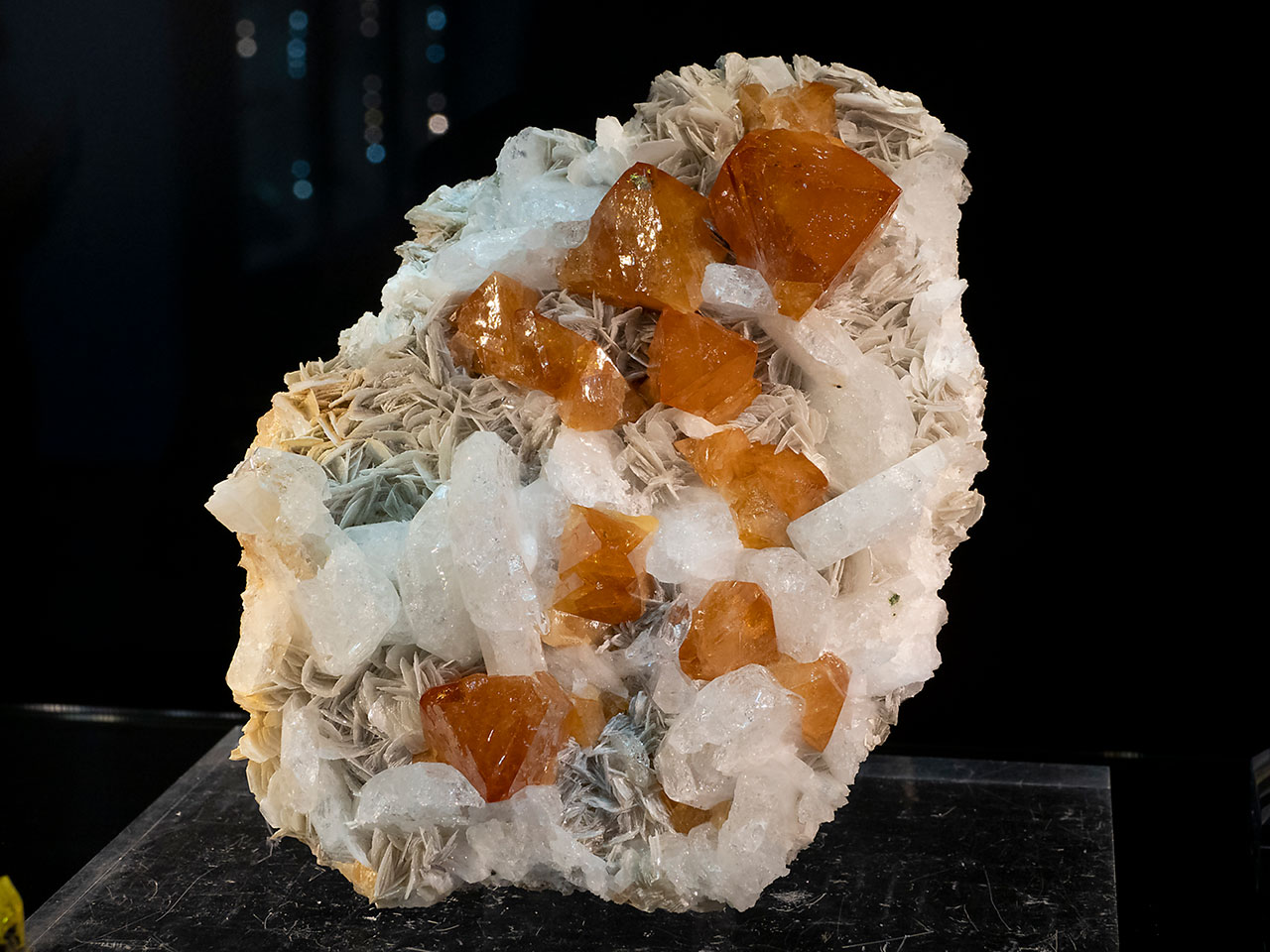

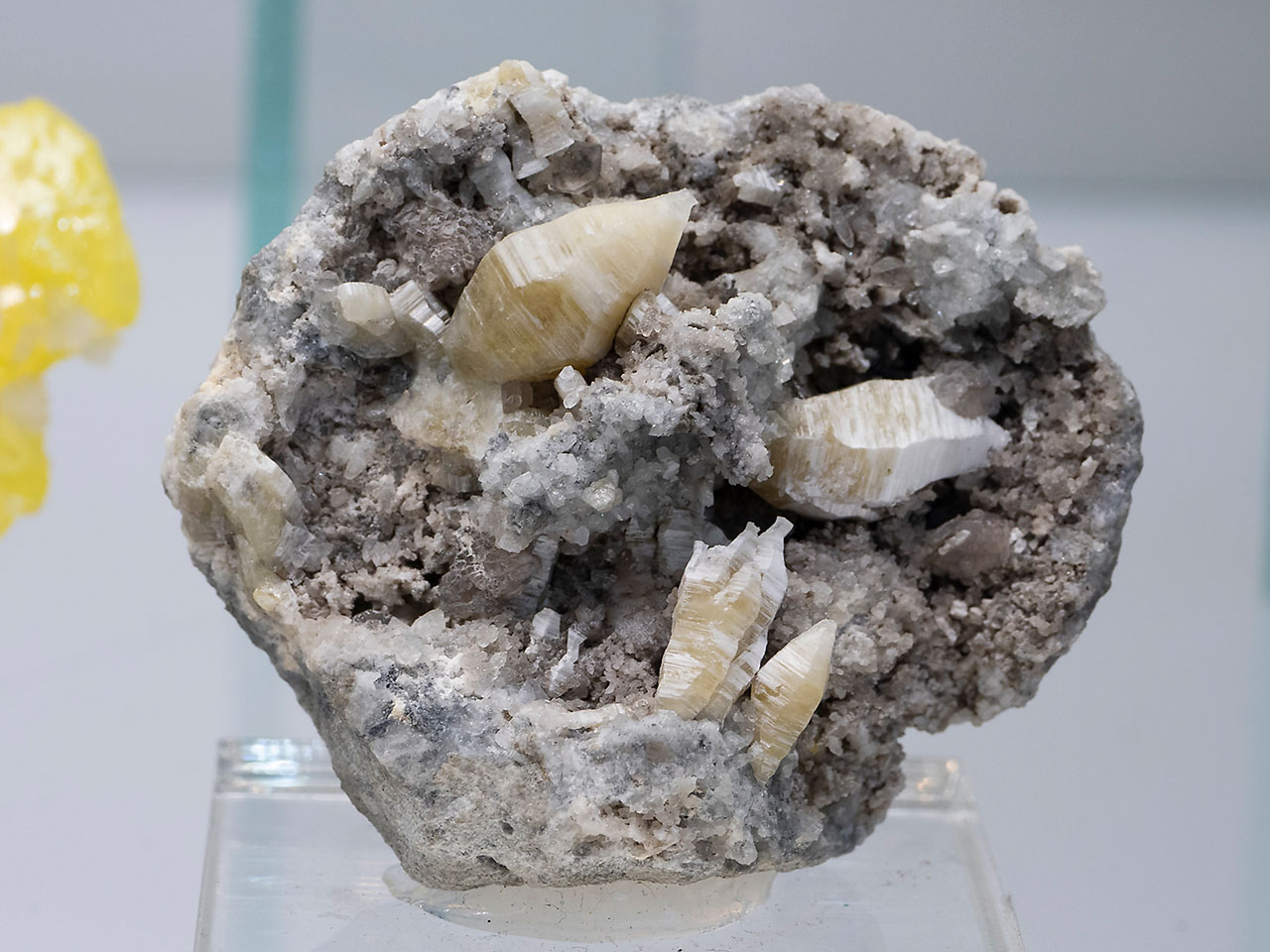
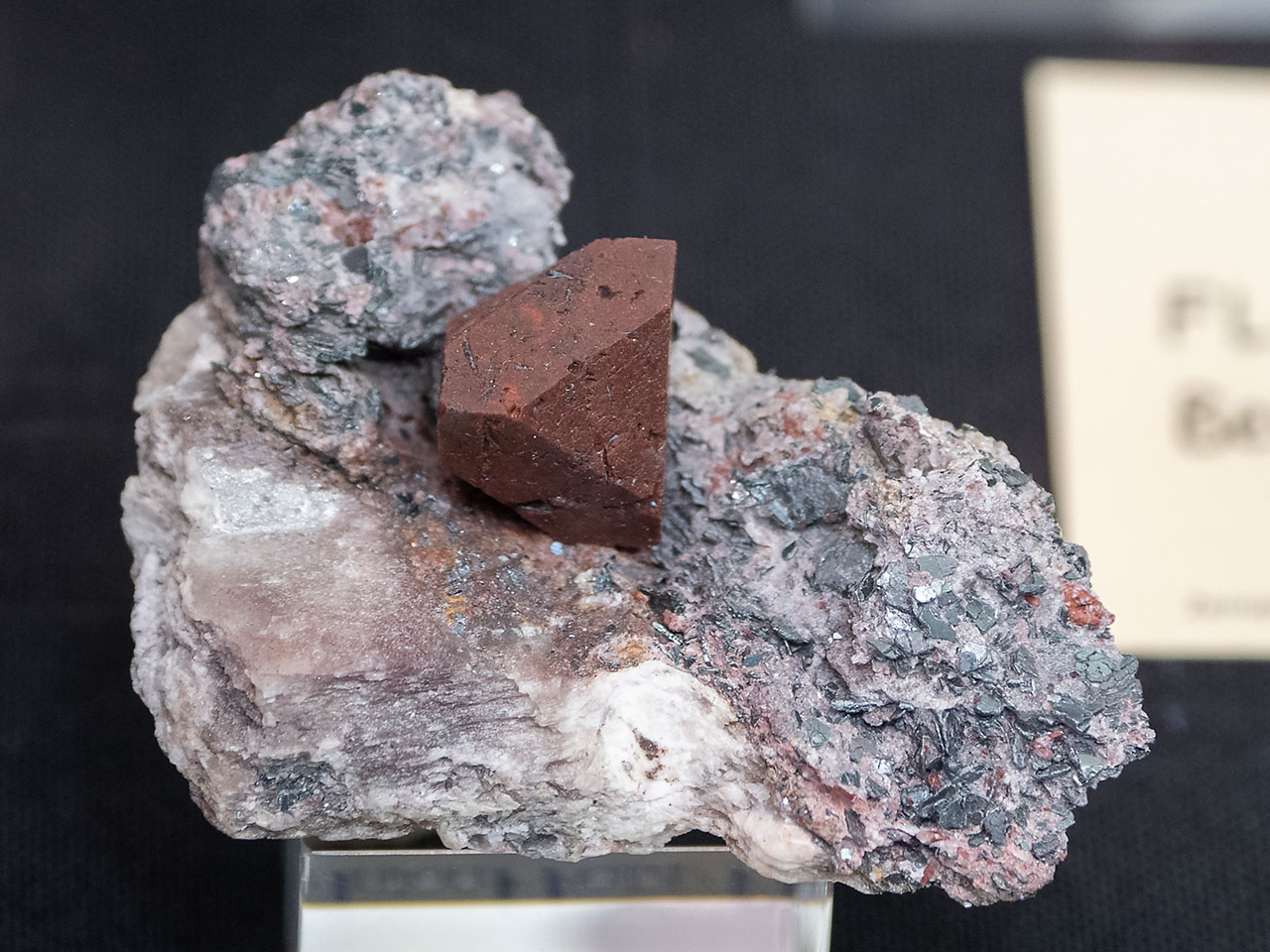





Comments